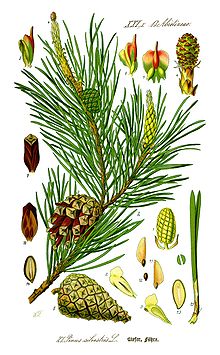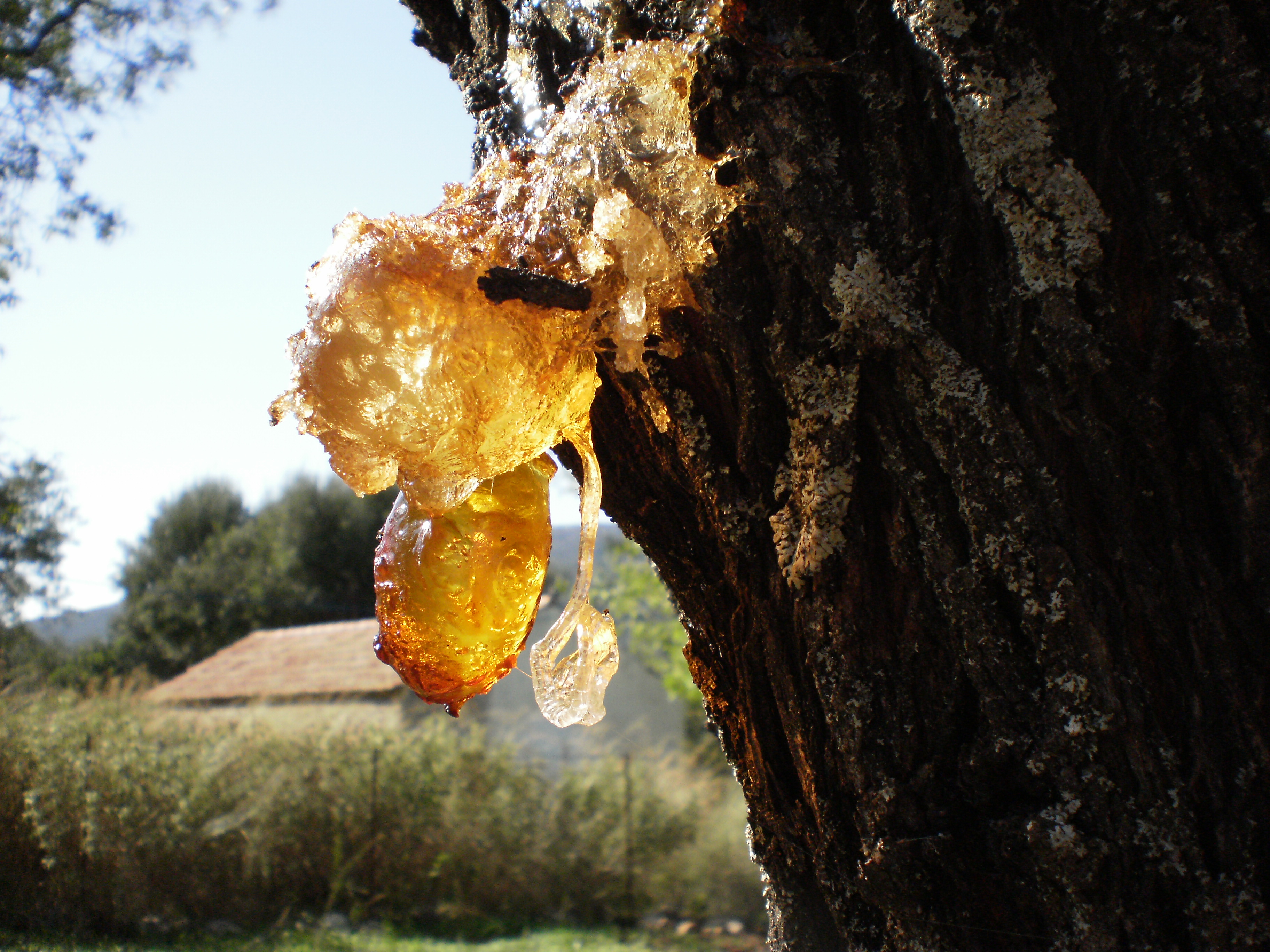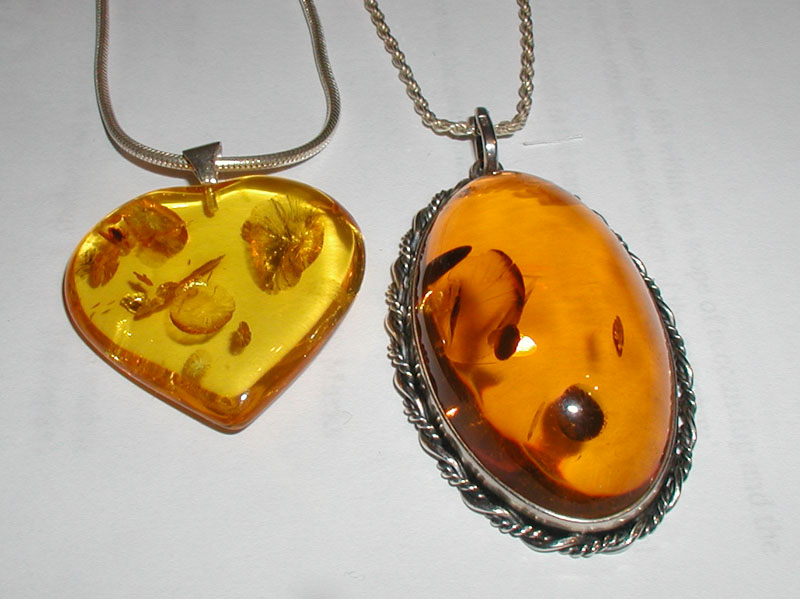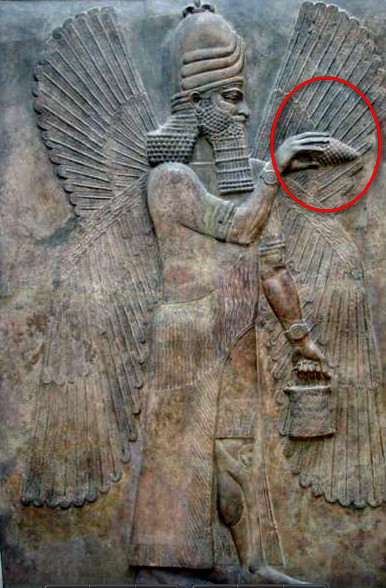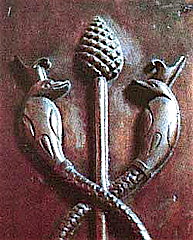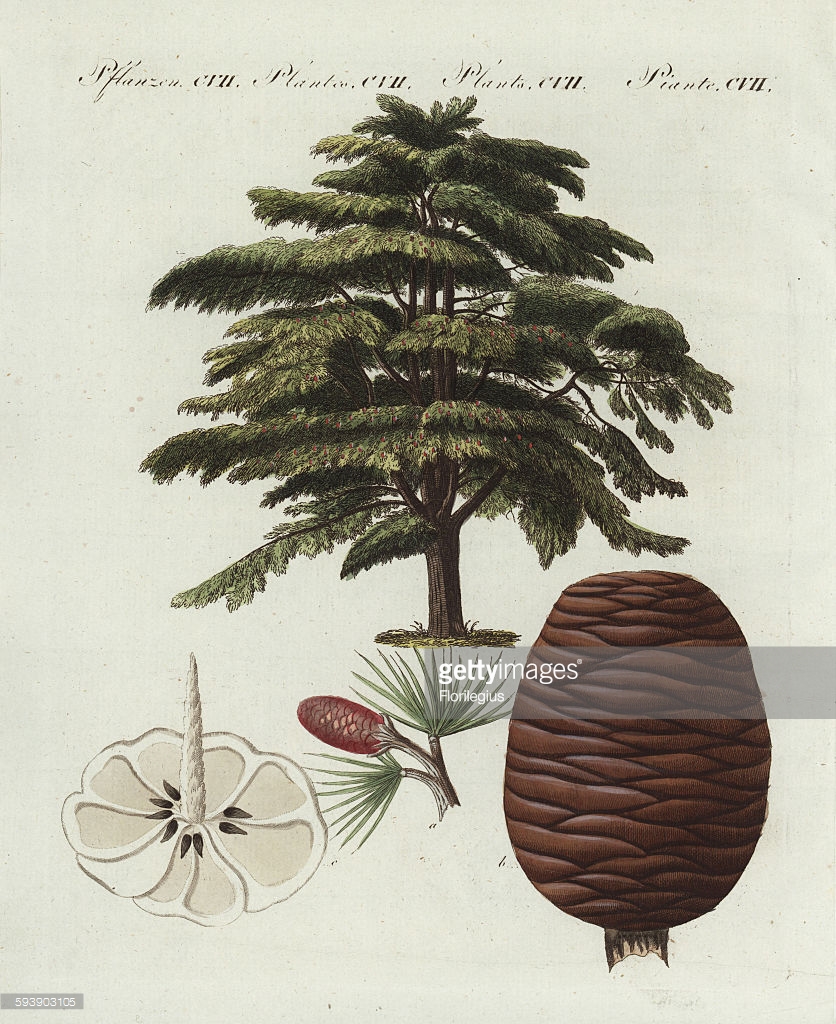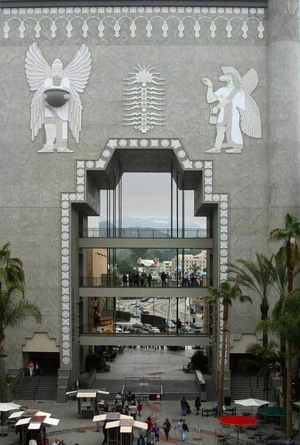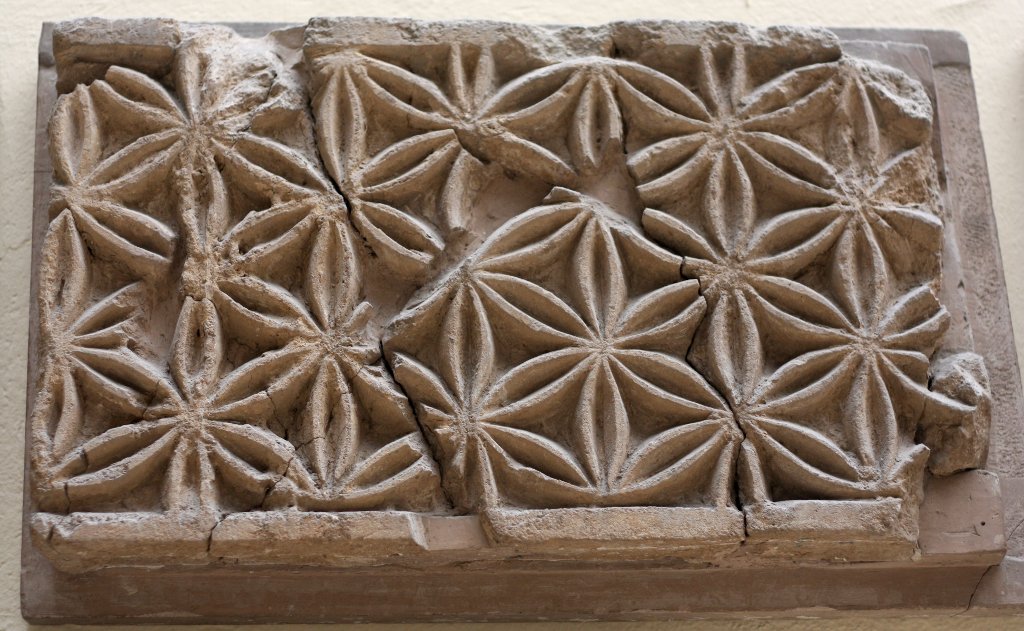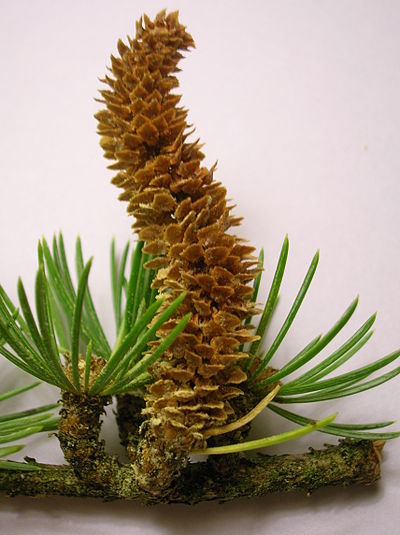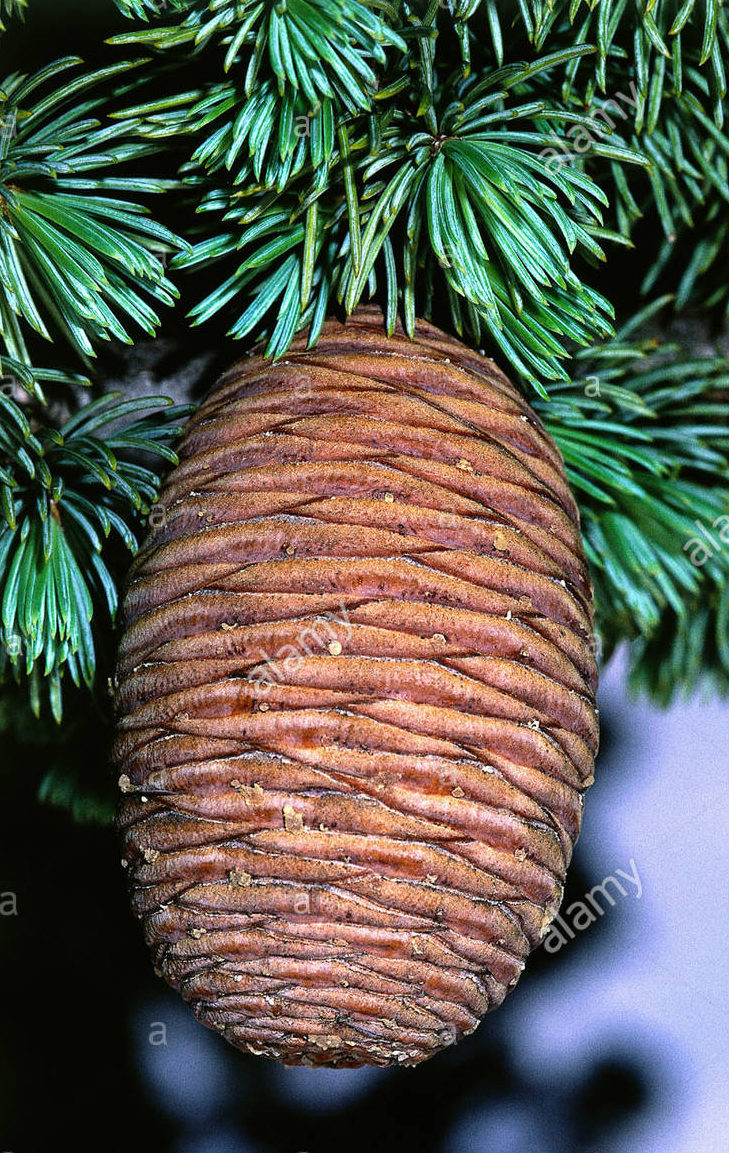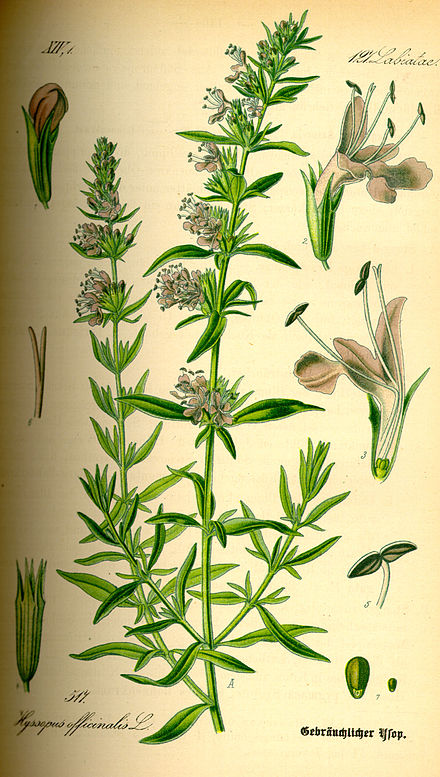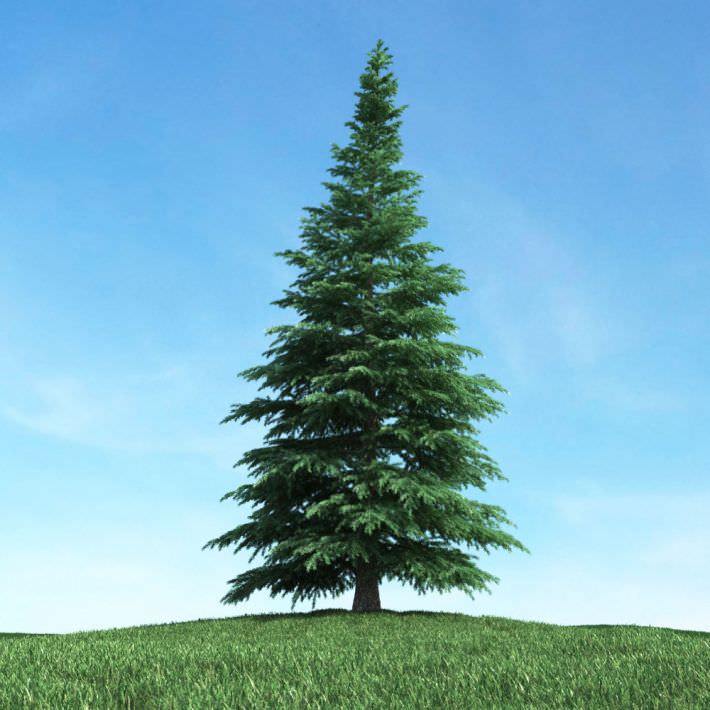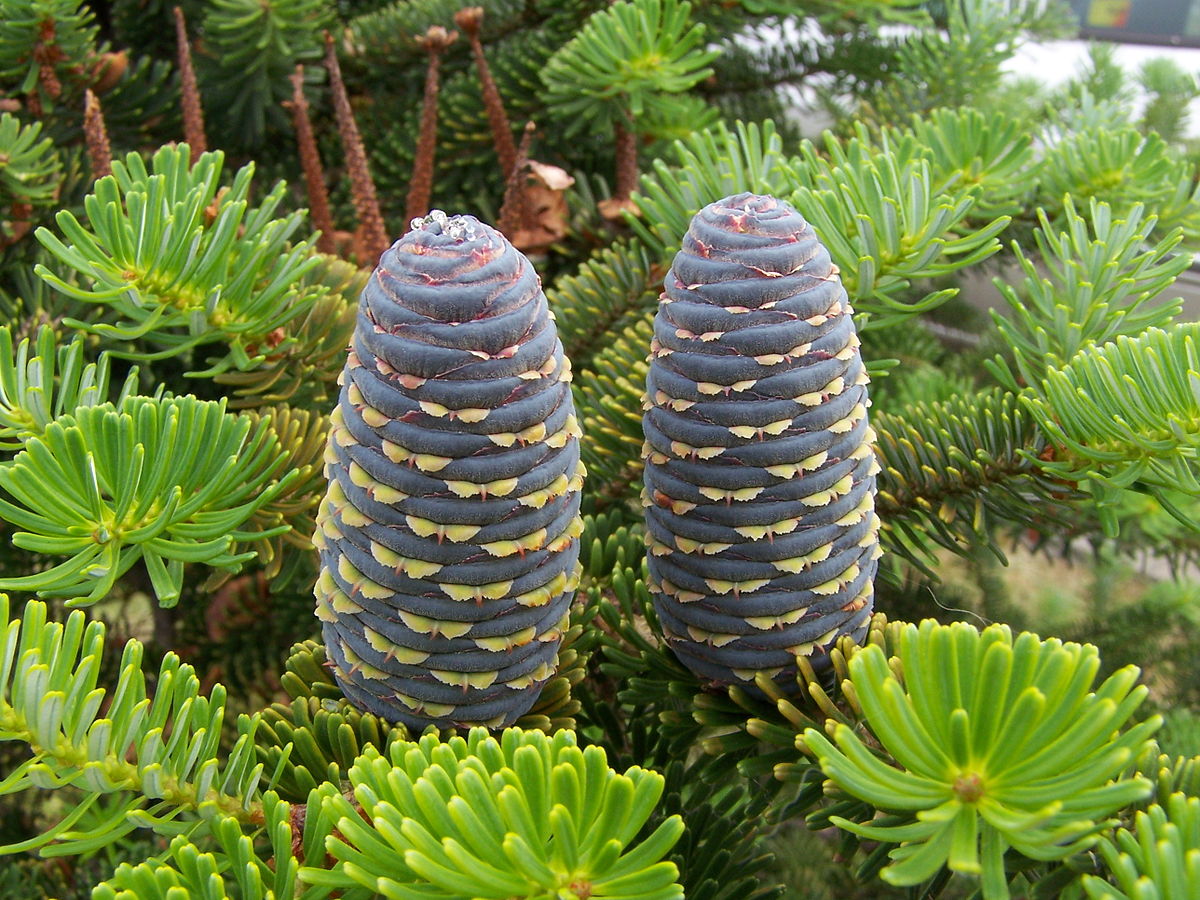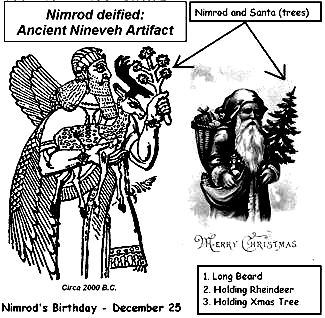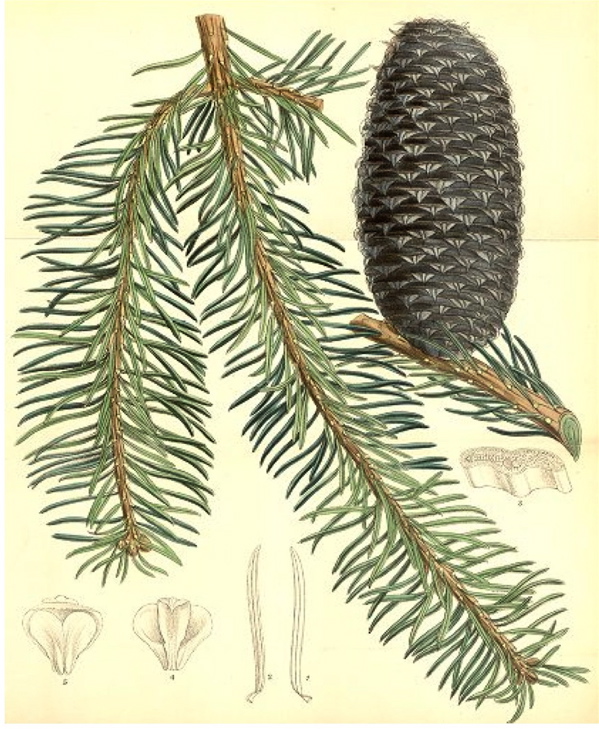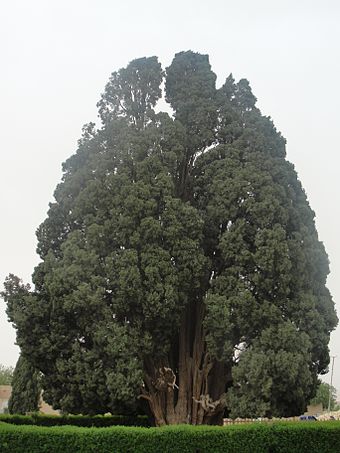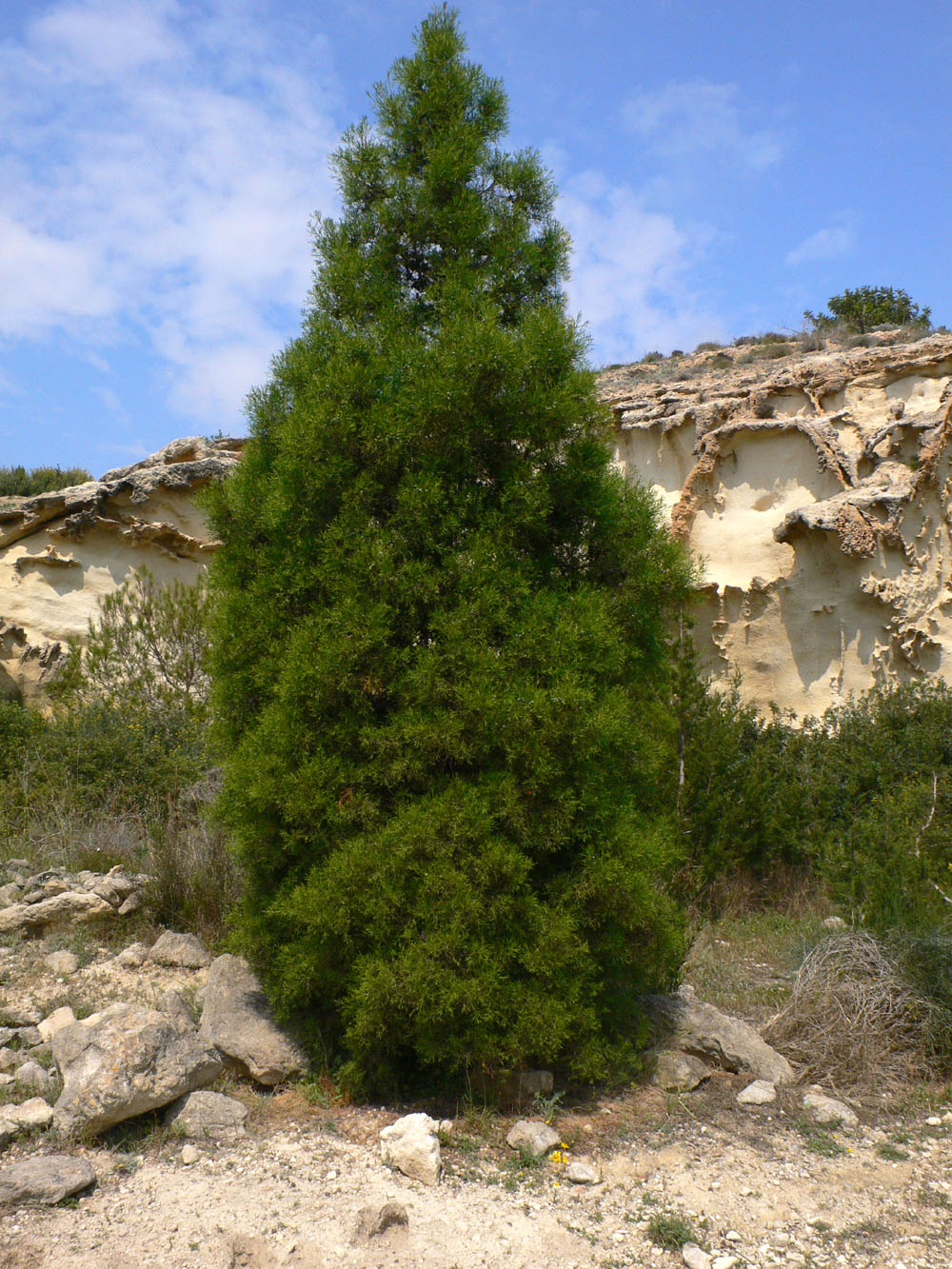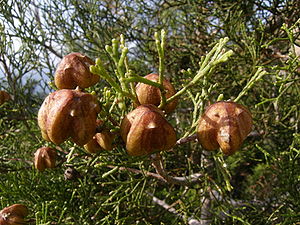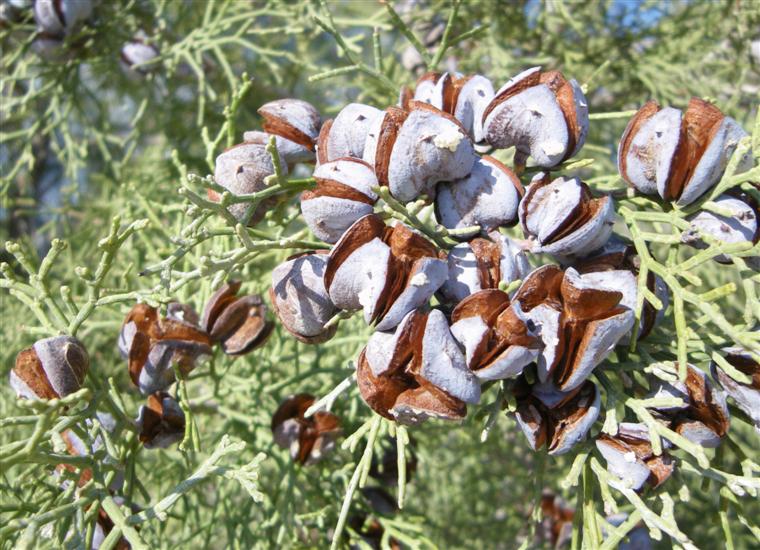PINES (Cone Bearers) :: CEDARS :: FIRS :: CYPRESS
Pinaceae (pine family) aka Coniferous Conifers
- is a Latin word,
- a compound of conus (cone)
- and ferre (to bear),
- meaning “the one that bears (a) cone(s)”.
- Cedar Tree,
- Fir Tree,
- Hemlocks,
- Pines and
- Spruces.
- Cypress (Sub-Family)
- Junipers
- Redwood
Pine
A pine is any conifer in the genus Pinus,/ˈpiːnuːs/,[1] of the family Pinaceae.
Pinus is the sole genus in the subfamily Pinoideae.
The Plant List compiled by the Royal Botanic Gardens, Kew and Missouri Botanical Garden
- accepts 126 species names of pines as current,
- together with 35 unresolved species and many more synonyms.[2]
The modern English name “pine” derives from Latin pinus,
Before the 19th century, pines were often referred to as firs
(from Old Norse fura, by way of Middle English firre).
In some European languages, Germanic cognates of the Old Norse name are still in use for pines
- —in Danish fyr,
- in Norwegian fura/fure/furu,
- Swedish fura/furu,
- Dutch vuren,
- and German Föhre—
- but in modern English,
- fir is now restricted to fir (Abies) and Douglas fir (Pseudotsuga).
Bark
Bark of an adult eastern white pine (pinus strobus) tree.
- The bark of most pines is thick and scaly, but some species have thin, flaky bark.
- The branches are produced in regular “pseudo whorls”, actually a very tight spiral but appearing like a ring of branches arising from the same point.
- Many pines are uninodal,
- producing just one such whorl of branches each year,
- from buds at the tip of the year’s new shoot,
- but others are multinodal,
- producing two or more whorls of branches per year.
- The spiral growth of branches, needles, and cone scales
- is arranged in Fibonacci number ratios.
- The new spring shoots are sometimes called “candles”;
- they are covered in brown or whitish bud scales
- and point upward at first,
- then later turn green and spread outward.
- These “candles” offer foresters a means to evaluate fertility of the soil and vigour of the trees.
Foliage Pines have 4 types of leaf:
Scots pine (Pinus sylvestris)
- Seed leaves (cotyledons) on seedlings are borne in a whorl of 4–24.
- Juvenile leaves,
- which follow immediately on seedlings and young plants,
- are 2–6 cm long, single,
- green or often blue-green,
- and arranged spirally on the shoot.
- These are produced for six months to five years, rarely longer.
- Scale leaves,
- similar to bud scales,
- are small,
- brown and not photosynthetic,
- and arranged spirally like the juvenile leaves.
- Needles, the adult leaves,
- are green (photosynthetic)
- and bundled in clusters called fascicles.
- The needles can number from one to seven per fascicle,
- but generally number from two to five.
- Each fascicle is produced from a small bud on a dwarf shoot in the axil of a scale leaf.
- These bud scales often remain on the fascicle as a basal sheath.
- The needles persist for 1.5–40 years, depending on species.
- If a shoot is damaged (e.g. eaten by an animal),
- the needle fascicles just below the damage will generate a bud which can then replace the lost leaves.
Cones
A growing female cone of a Scots pine
Pines are mostly monoecious, having the male and female cones on the same tree, though a few species are sub-dioecious, with individuals predominantly, but not wholly, single-sex. The male cones are small, typically 1–5 cm long, and only present for a short period (usually in spring, though autumn in a few pines), falling as soon as they have shed their pollen. The female cones take 1.5–3 years (depending on species) to mature after pollination, with actual fertilization delayed one year. At maturity the female cones are 3–60 cm long. Each cone has numerous spirally arranged scales, with two seeds on each fertile scale; the scales at the base and tip of the cone are small and sterile, without seeds. The seeds are mostly small and winged, and are anemophilous (wind-dispersed), butsome are larger and have only a vestigial wing, and are bird-dispersed (see below). At maturity, the cones usually open to release the seeds, but in some of the bird-dispersed species (e.g. whitebark pine), the seeds are only released by the bird breaking the cones open. In others, the seeds are stored in closed (“serotinous”) cones for many years until an environmental cue triggers the cones to open, releasing the seeds. The most common form of serotiny is pyriscence, in which a resin binds the cones shut until melted by a forest fire.Fully grown/ freshly fallen female pine cone
Ecology
- Pines grow well in acid soils, some also on calcareous soils;
- most require good soil drainage, preferring sandy soils,
- but a few (e.g. lodgepole pine) can tolerate poorly drained wet soils.
- A few are able to sprout after forest fires (e.g. Canary Island pine).
- Some species of pines (e.g. bishop pine) need fire to regenerate,
- and their populations slowly decline under fire suppression regimens.
- Several species are adapted to extreme conditions imposed by elevation and latitude
- (e.g. Siberian dwarf pine, mountain pine, whitebark pine, and the bristlecone pines).
- The pinyon pines and a number of others, notably Turkish pine and gray pine,
- are particularly well adapted to growth in hot, dry semidesert climates.
The seeds are commonly eaten by birds, such as grouse, crossbills, jays, nuthatches, siskins, and woodpeckers, and by squirrels. Some birds, notably the spotted nutcracker, Clark’s nutcracker, and pinyon jay, are of importance in distributing pine seeds to new areas. Pine needles are sometimes eaten by some Lepidoptera (butterfly and moth) species (see list of Lepidoptera that feed on pines), the Symphytan species pine sawfly, and goats.[citation needed]
Pine pollen may play an important role in the functioning of detrital food webs.[8] Nutrients from pollen aid detritivores in development, growth, and maturation, and may enable fungi to decompose nutritionally scarce litter.[8] Pine pollen is also involved in moving plant matter between terrestrial and aquatic ecosystems.[8]
Uses
Pines are among the most commercially important tree species
- valued for their timber
- and wood pulp throughout the world[9][10].
In temperate and tropical regions,
- they are fast-growing softwoods that grow in relatively dense stands,
- their acidic decaying needles inhibiting the sprouting of competing hardwoods.
Commercial pines are grown in plantations for timber that is denser, more resinous, and therefore more durable than spruce (Picea).Pine wood is widely used in high-value carpentry items such as
- furniture,
- window frames,
- panelling,
- floors,
- and roofing,
- and the resin of some species is an important source of turpentine.
Turpentine
Turpentine(also called spirit of turpentine, oil of turpentine, wood turpentine and c
olloquially turps) is a fluid obtained by the distillation of resin obtained from live trees, mainly pines.
It is mainly used as a solvent and as a source of materials for organic synthesis.
It is a volatile pungent oil distilled from gum turpentine or pine wood, used in mixing paints and varnishes and in liniment.
Crude oleoresin collected from wounded trees may be evaporated by steam distillation in a copper still.
Molten rosin remains in the still bottoms after turpentine has been evaporated and recovered from a condenser.
[5] Turpentine may alternatively be condensed from destructive distillation of pine wood.[2]
Oleoresin may also be extracted from shredded pine stumps, roots, and slash using the light end of the heavy naphtha fraction (boiling between 90 and 115 °C or 195 and 240 °F) from a crude oil refinery. Multi-stage counter-current extraction is commonly used so fresh naphtha first contacts wood leached in previous stages and naphtha laden with turpentine from previous stages contacts fresh wood before vacuum distillation to recover naphtha from the turpentine. Leached wood is steamed for additional naphtha recovery prior to burning for energy recovery.[7]
When producing chemical wood pulp from pines or other coniferous trees,
- sulfate turpentine may be condensed from the gas generated in Kraft process pulp digesters.
- The average yield of crude sulfate turpentine is 5–10 kg/t pulp.[8]
- Unless burned at the mill for energy production,
- sulfate turpentine may require additional treatment measures
- to remove traces of sulfur compounds.[9]
Turpentine and petroleum distillates such as coal oil and kerosene have been used medicinally since ancient times, as topical and sometimes internal home remedies. Topically it has been used for abrasions and wounds, as a treatment for lice, and when mixed with animal fat it has been used as a chest rub, or inhaler for nasal and throat ailments. Many modern chest rubs, such as the Vicks variety, still contain turpentine in their formulations.
Turpentine was a common medicine among seamen during the Age of Discovery. It is one of several products carried aboard Ferdinand Magellan’s fleet in his first circumnavigation of the globe,[10]. Taken internally it has been used as a treatment for intestinal parasites, and candida because of its antiseptic properties.[11][12]
Turpentine is also added to many cleaning and sanitary products due to its antiseptic properties and its “clean scent.” In early 19th-century America, turpentine was sometimes burned in lamps as a cheap alternative to whale oil. It was most commonly used for outdoor lighting, due to its strong odour.[13]
A blend of ethanol and turpentine added as an illuminant called burning fluid was also important for several decades.
In 1946, Soichiro Honda fueled the first Honda motorcycles with turpentine, due to the scarcity of gasoline in Japan following World War II.[14] Turpentine was added extensively into gin during the Gin Craze.[15]
RESIN
- In polymer chemistry and materials science,
- resin is a “solid or highly viscous substance”
- of plant or synthetic origin that is typically convertible into polymers.[1]
- They are often mixtures of organic compounds, principally terpenes.
- Many plants, particularly woody plants, produce resin in response to injury.
- The resin acts as a bandage protecting the plant from invading insects and pathogens.[2]
Amber is fossilized tree resin, (also called resinite) from coniferous and other tree species.
- which has been appreciated for its color and natural beauty since Neolithic times.[2]
- Much valued from antiquity to the present as a gemstone,
- amber is made into a variety of decorative objects.[3]
- Amber is used in jewelry.
- It has also been used as a healing agent in folk medicine.
- There are five classes of amber,
- defined on the basis of their chemical constituents.
- Because it originates as a soft, sticky tree resin, amber sometimes contains animal and plant material as inclusions.[4]
- Amber occurring in coal seams
- is also called resinite,
- and the term ambrite is applied to that found specifically within New Zealand coal seams.[5]
- The classical names for amber,
- Latin electrum and
- Ancient Greekἤλεκτρον (ēlektron),
- are connected to a term ἠλέκτωρ (ēlektōr)
- meaning “beaming Sun”.
- According to myth,
- when Phaëtonson of Helios (the Sun) was killed,
- his mourning sisters became poplar trees,
- and their tears became elektron, amber.
- Amber has been used since prehistory (Solutrean)
- in the manufacture of jewelry and ornaments,
- and also in folk medicine.
- Pliny the Elder states that amber is also found in Egypt and in India,
- and he even refers to the electrostatic properties of amber,
- by saying that “in Syria the women make the whorls of their spindles of this substance,
- and give it the name of harpax [from ἁρπάζω, “to drag”]
- from the circumstance that it attracts leaves towards it, chaff,
- and the light fringe of tissues.”
(For Amber waves of grace)
[h7526] רְצִין Rᵉtsîyn, rets-een’; 11x “firm”
- probably for H7522;
- King of Syria
- the progenitor of a family of temple slaves who returned from captivity with Zerubbabel
Isaiah 7 : A Message to Ahaz
1And it came to pass in the days of Ahaz the son of Jotham, the son of Uzziah, king of Judah, that Rezin [h7526] the king of Syria, and Pekah the son of Remaliah, king of Israel, went up toward Jerusalem to war against it, but could not prevail against it. 2And it was told the house of David, saying, Syria is confederate with Ephraim. And his heart was moved, and the heart of his people, as the trees of the wood are moved with the wind.
3Then said the LORD to Isaiah, Go forth now to meet Ahaz, you, and Shearjashub your son, at the end of the conduit of the upper pool in the highway of the fuller’s field; 4And say to him, Take heed, and be quiet; fear not, neither be fainthearted for the two tails of these smoking firebrands, for the fierce anger of Rezin [h7526] with Syria, and of the son of Remaliah. 5Because Syria, Ephraim, and the son of Remaliah, have taken evil counsel against you, saying, 6Let us go up against Judah, and vex it, and let us make a breach therein for us, and set a king in the middle of it, even the son of Tabeal: 7Thus said the Lord GOD, It shall not stand, neither shall it come to pass. 8For the head of Syria is Damascus, and the head of Damascus is Rezin [h7526]; and within 65 years shall Ephraim be broken, that it be not a people. 9And the head of Ephraim is Samaria, and the head of Samaria is Remaliah’s son. If you will not believe, surely you shall not be established.
The Sign of Immanuel (Micah 5:1-6; Matthew 1:18-25; Luke 2:1-7)
10Moreover the LORD spoke again to Ahaz, saying, 11Ask you a sign of the LORD your God; ask it either in the depth, or in the height above. 12But Ahaz said, I will not ask, neither will I tempt the LORD. 13And he said, Hear you now, O house of David; Is it a small thing for you to weary men, but will you weary my God also? 14Therefore the Lord himself shall give you a sign; Behold, a virgin shall conceive, and bear a son, and shall call his name Immanuel. 15Butter and honey shall he eat, that he may know to refuse the evil, and choose the good. 16For before the child shall know to refuse the evil, and choose the good, the land that you abhor shall be forsaken of both her kings.
Judgment to Come (Micah 1:1-7)
17The LORD shall bring on you, and on your people, and on your father’s house, days that have not come, from the day that Ephraim departed from Judah; even the king of Assyria. 18And it shall come to pass in that day, that the LORD shall hiss for the fly that is in the uttermost part of the rivers of Egypt, and for the bee that is in the land of Assyria. 19And they shall come, and shall rest all of them in the desolate valleys, and in the holes of the rocks, and on all thorns, and on all bushes. 20In the same day shall the Lord shave with a razor that is hired, namely, by them beyond the river, by the king of Assyria, the head, and the hair of the feet: and it shall also consume the beard. 21And it shall come to pass in that day, that a man shall nourish a young cow, and two sheep; 22And it shall come to pass, for the abundance of milk that they shall give he shall eat butter: for butter and honey shall every one eat that is left in the land. 23And it shall come to pass in that day, that every place shall be, where there were a thousand vines at a thousand sliver coins, it shall even be for briers and thorns. 24With arrows and with bows shall men come thither; because all the land shall become briers and thorns. 25And on all hills that shall be dig with the mattock, there shall not come thither the fear of briers and thorns: but it shall be for the sending forth of oxen, and for the treading of lesser cattle.
Because pines have no insect- or decay-resistant qualities after logging,
- they are generally recommended for construction purposes
- as indoor use only (ex. indoor drywall framing).
This wood left outside can be expected to last no more than 12–18 months depending on the local climate.
It is commonly referred to by several different names
- which include North American timber,
- spruce/pine/fir (SPF),
- and whitewood.
Ornamental uses
- Many pine species make attractive ornamental plantings
- for parks and larger gardens
- with a variety of dwarf cultivars being suitable for smaller spaces.
- Pines are also commercially grown and harvested for Christmas trees.
- Pine cones, the largest and most durable of all conifer cones, are craft favorites.
- Pine boughs, appreciated especially in wintertime for their pleasant smell and greenery, are popularly cut for decorations.
- Pine needles are also used for making decorative articles such as
- baskets, trays, pots, etc,
- and during the U.S. Civil War,
- the needles of the longleaf pine “Georgia pine” were widely employed in this.
- This originally Native American skill is now being replicated across the world.
- Pine needle handicrafts are made in the US, Canada, Mexico, Nicaragua, and India.
Farming
- When grown for sawing timber,
- pine plantations can be harvested after 30 years,
- with some stands being allowed to grow up to 50
- (as the wood value increases more quickly as the trees age).
- Imperfect trees (such as those with bent trunks or forks, smaller trees, or diseased trees)
- are removed in a “thinning” operation every 5-10 years.
- Thinning allows the best trees to grow much faster,
- because it prevents weaker trees from competing for sunlight, water, and nutrients.
- Young trees removed during thinning are used for pulpwood,
- while most older ones are good enough for saw timber.
- The final wood quality can be improved by pruning small branches at ages 5, 7, and 9.
- Pruning usually goes up to a height of 6 metres (20 ft).
- This results in smooth timber with no knots, which is considerably more valuable. [13]
- A 30-year-old commercial pine tree grown in good conditions will be about
- 0.3 m (1.0 ft) in diameter
- and about 20 m (66 ft) high.
- After 50 years, the same tree will be about
- 0.5 m (1.6 ft) in diameter
- and 25 m (82 ft) high,
- and its wood will be worth about 7 times as much as the 30-year-old tree. [14]
- Trees are planted 3-4 m apart, or about 1000 per hectare (100,000 per km2).
Food and nutrients
Korean pine nuts
- Some species have large seeds, called pine nuts, that are harvested and sold for cooking and baking.
- They are an essential ingredient of pesto alla genovese.
- The soft, moist, white inner bark (cambium) found clinging to the woody outer bark is edible and very high in vitamins A and C.
- It can be eaten raw in slices as a snack or dried and ground up into a powder for use as an ersatz flour or thickener in stews, soups, and other foods, such as bark bread.
- Adirondack Indians got their name from the Mohawk Indian word atirú:taks, meaning “tree eaters”.
- A tea made by steeping young, green pine needles in boiling water (known as tallstrunt in Sweden) is high in vitamins A and C.
- In eastern Asia, pine and other conifers are accepted among consumers as a beverage product, and used in teas, as well as wine.[15]
- Pine needles from Pinus densiflora were found to contain 30.54 mg/g of proanthocyanidins when extracted with hot water.
- Comparative to ethanol extraction resulting in 30.11 mg/g, simply extracting in hot water is preferable.
- Proanthocyanidins, the nutrient for which wine and grapes are famed and grapeseed extract is used medicinally[17], is in nearly the same quantity in pine needles of P. densiflora as it is in grape juice (35 mg/g).
- Grapeseed extract from cultivated grapes is 48.9 to 96.7 mg/g.[18]
[H8410] תִּדְהָר tidhâr, tid-hawr’; 2 in 2 Pine
- enduring; a species of hard-wood or lasting tree (perhaps oak):
- —pine (tree).
- a species of hardwood tree
- boxwood
- apparently from H1725;
Isaiah 60 : Future Glory for Zion
13 The glory of Lebanon shall come unto thee, the fir tree, the pine tree,[H8410] and the box together, to beautify the place of my sanctuary; and I will make the place of my feet glorious.
[H4743] מָקַק mâqaq, maw-kak’; 10x in 7v to melt; to pine away
- figuratively, to flow, dwindle, vanish:
- —consume away, be corrupt, dissolve, pine away.
Leviticus 26:39 And they that are left of you shall pine away[H4743] in their iniquity in your enemies’ lands; and also in the iniquities of their fathers shall they pine away[H4743] with them.
Psalm 38:5 My wounds stink [and] are corrupt[H4743] because of my foolishness.
Isaiah 34:4 And all the host of heaven shall be dissolved,[H4743] and the heavens shall be rolled together as a scroll: and all their host shall fall down, as the leaf falleth off from the vine, and as a falling [fig] from the fig tree.
Ezekiel 4:17 hat they may want bread and water, and be astonied one with another, and consume away[H4743] for their iniquity.
Ezekiel 24:23 And your tires [shall be] upon your heads, and your shoes upon your feet: ye shall not mourn nor weep; but ye shall pine away[H4743] for your iniquities, and mourn one toward another.
Ezekiel 33:10 Therefore, O thou son of man, speak unto the house of Israel; Thus ye speak, saying, If our transgressions and our sins [be] upon us, and we pine away[H4743] in them, how should we then live?
Zechariah 14:12 And this shall be the plague wherewith the LORD will smite all the people that have fought against Jerusalem; Their flesh shall consume away[H4743] while they stand upon their feet, and their eyes shall consume away[H4743] in their holes, and their tongue shall consume away[H4743] in their mouth.
Nimrod | Osiris | Baal holding Pinecone
The Egyptian Staff of Osiris, 1224 BC
Pinecone at Vatican
Our Pineal Gland, shaped like (and named after) the Pinecone,
- is at the geometric center of our brain
- and is intimately linked to our body’s perception of light.
The spiral growth of branches, needles, and cone scales is arranged in Fibonacci number ratios.
The new spring shoots are sometimes called “candles”;
- they are covered in brown or whitish bud scales
- and point upward at first,
- then later turn green and spread outward.
- our wake-sleep patterns
- and circadian rhythms,
- remains uniquely isolated
- from the blood-brain barrier system,
- and receives a higher percentage of blood flow
- than any other area of the body save the kidneys.
It is considered by many to be our biological Third Eye,
- the “Seat of the Soul,”
- the “Epicenter of Enlightenment”
It’s sacred symbol throughout history, in cultures around the world, has been the Pinecone.
CEDAR OF LEBANON
Cedrus libani is an evergreen coniferous tree,
- it can reach 40 m (130 ft) in height
- with a massive monopodial columnar trunk
- up to 2.5 m (8 ft 2 in) in diameter.
The trunks of old trees ordinarily fork
- into several large, erect branches.
The rough and scaly bark is
- dark grey to blackish brown,
- it is run through by deep horizontal fissures
- that peel in small chips.
The first-order branches are ascending in young trees;
- they grow to a massive size and take on a horizontal,
- wide-spreading disposition.
Second-order branches are dense and grow in a horizontal plane.
The crown is conical when young,
- becoming broadly tabular with age
- with fairly level branches;
- trees growing in dense forests
- maintain a more pyramidal shape.
The shoots are dimorphic, with both long and short shoots.
New shoots are pale brown, older shoots turn grey, grooved and scaly.
C. libani has slightly resinous ovoid vegetative buds
- measuring 2 to 3 mm (0.079 to 0.118 in) long
- and 1.5 to 2 mm (0.059 to 0.079 in) wide
- enclosed by pale brown deciduous scales.
The leaves are needle-like,
- arranged in spirals and concentrated
- at the proximal end of the long shoots,
- and in clusters of 15-35 on the short shoots;
- they are 5 to 35 mm (0.20 to 1.38 in) long
- and 1 to 1.5 mm (0.039 to 0.059 in) wide,
- rhombic in cross-section,
- and vary from light green to glaucous green with stomatal bands on all four sides.
Cedrus libani produces cones at around the age of 40;
- it flowers in autumn,
- the male cones appear in early September
- the female ones in late September.
Male cones occur at the ends of the short shoots;
- they are solitary and erect approximately 4 to 5 cm (1.6 to 2.0 in) long
- mature from a pale green to a pale brown color.
The female seed cones also grow at the terminal ends of short shoots.
The young seed cones are resinous, sessile and pale green;
- they require 17 to 18 months after pollination to mature.
The mature woody cones are
- 8 to 12 cm (3.1 to 4.7 in) long
- 3 to 6 cm (1.2 to 2.4 in) wide;
- they are scaly, resinous, ovoid or barrel shaped and gray-brown in color.
Mature cones open from top to bottom,
- they disintegrate
- and lose their seed scales
- releasing the seeds
- until only the cone rachis
- remains attached to the branches.
The seed scales are thin,
- broad and coriaceous
- measuring 3.5 to 4 cm (1.4 to 1.6 in) long
- and 3 to 3.5 cm (1.2 to 1.4 in) wide.
The seeds are ovoid,
- 10 to 14 mm (0.39 to 0.55 in) long
- 4 to 6 mm (0.16 to 0.24 in) wide,
- attached to a light brown wedge-shaped wing
- that’s 20 to 30 mm (0.79 to 1.18 in) long
- and 15 to 18 mm (0.59 to 0.71 in) wide.
Cedrus libani grows rapidly
- until the age of 45 to 50 years;
- growth becomes extremely slow after the age of 70 years.
The Cedar Forest is the glorious realm of the gods of Mesopotamian mythology.
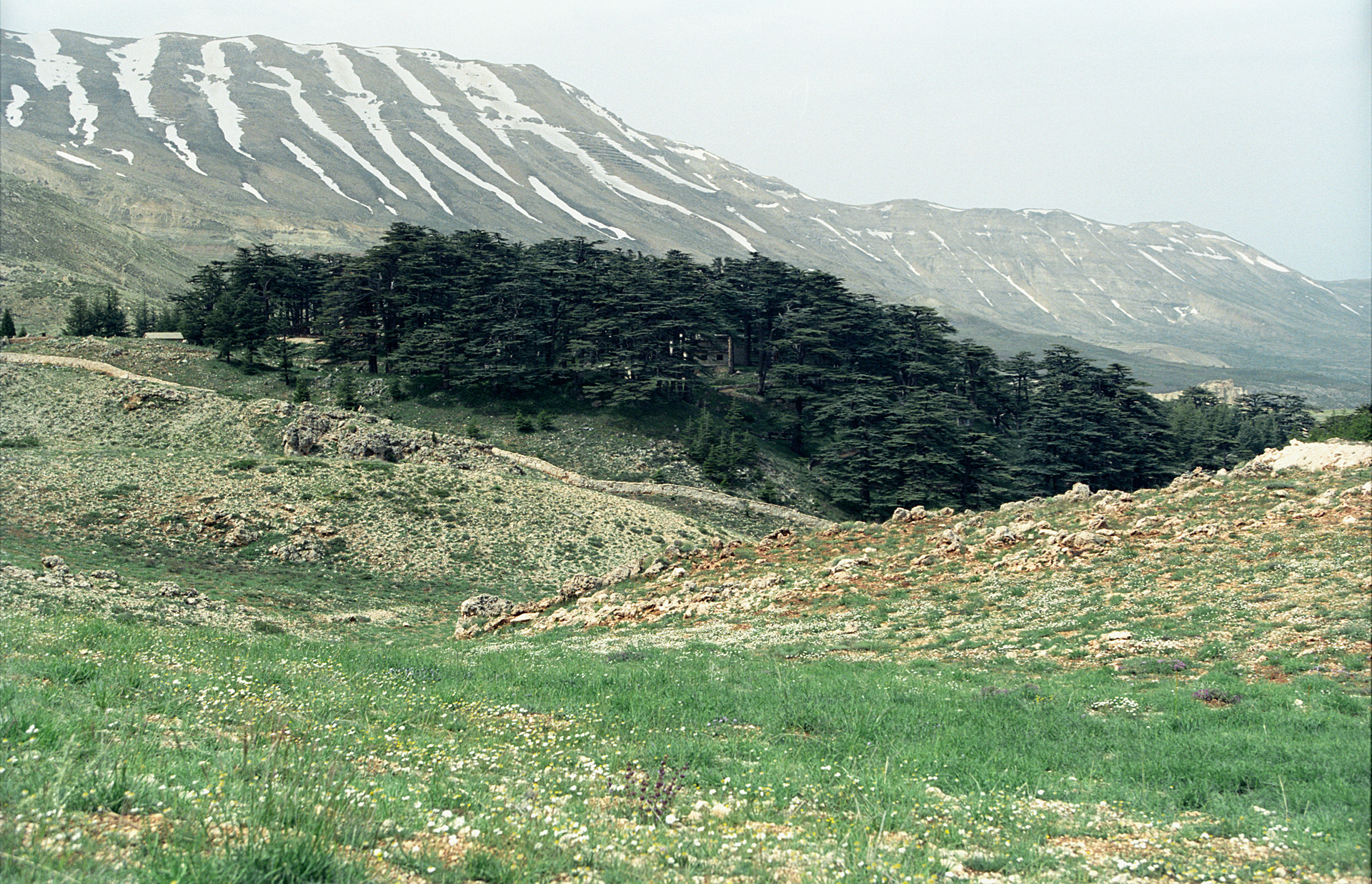
It is guarded by the demigod Humbaba and was once entered by the hero Gilgamesh
who dared cut down trees from its virgin stands during his quest for fame.
[h730] אֶרֶז ʼerez, eh-rez’; 73 in 69 Cedar
- from H729;
- a cedar tree
- (from the tenacity of its roots):—cedar (tree).
Solomon’s Temple built from the Cedars of Lebanon that came from Hiram of Tyre
- the beams and boards
- chambers (rested on cedar)
- walls (which were carved with knops and open flowers)
- floors (were cedar and covered with planks of fir)
- ceiling
- altar
- inner court (had row of cedar beams)
Solomon’s House
- built upon 4 rows of cedar pillars with cedar beams upon the pillars
- it was covered with cedar above upon the beams that lay on 45 pillars, 15 in a row
- the porch for the throne where he might judge was covered with cedar from one side of the floor to the other
- the great court round about was with 3 rows of hewed stones, and a row of cedar beams, both for the inner court of the house of the LORD, and for the porch of the house.
Leviticus 14:
4 Then shall the priest command to take for him that is to be cleansed
two birds alive and clean, and cedar [H730] wood, and scarlet, and hyssop: …
6 As for the living bird, he shall take it, and the cedar [H730] wood,
and the scarlet, and the hyssop, and shall dip them
and the living bird in the blood of the bird that was killed over the running water: …
49 And he shall take to cleanse the house two birds, and cedar [H730] wood, and scarlet, and hyssop: …
51 And he shall take the cedar [H730] wood, and the hyssop, and the scarlet,
and the living bird, and dip them in the blood of the slain bird,
and in the running water, and sprinkle the house 7 times:
52 And he shall cleanse the house with the blood of the bird,
and with the running water, and with the living bird,
and with the cedar [H730] wood, and with the hyssop, and with the scarlet:
- an antiseptic, cough reliever, and expectorant, it is commonly used as a medicinal plant.
- Hyssop is a brightly coloured shrub or subshrub that ranges from 30 to 60 cm (12 to 24 in) in height.
- The stem is woody at the base, from which grow a number of straight branches.
- Its leaves are lanceolate, dark green in colour, and from 2 to 2.5 cm (0.79 to 0.98 in) long.[3]
- During the summer, the plant produces bunches of pink, blue, or, more rarely, white fragrant flowers.
- These give rise to small oblong achenes.
- The plant is commonly used by beekeepers to produce a rich and aromatic honey.
- Herb hyssop leaves are used as an aromatic condiment.
- The leaves have a lightly bitter taste due to its tannins, and an intense minty aroma.
- Due to its intensity, it is used moderately in cooking.
- The herb is also used to flavor liqueur, and is part of the official formulation of Chartreuse.
Used for cleansing and Purification
Exodus 12 : Passover
22 And ye shall take a bunch of hyssop,[H231] and dip it in the blood that is in the bason, and strike the lintel and the two side posts with the blood that is in the bason; and none of you shall go out at the door of his house until the morning.
Psalm 51 : Create in Me a Clean Heart
7 Purge me with hyssop,[H231] and I shall be clean: wash me, and I shall be whiter than snow.
Hebrews 9 :
For when Moses had spoken every precept to all the people according to the law, he took the blood of calves and of goats, with water, and scarlet wool, and hyssop, and sprinkled both the book, and all the people,
John 19 : The Death of Jesus
28After this, Jesus knowing that all things were now accomplished, that the scripture might be fulfilled, said, I thirst. 29Now there was set a vessel full of vinegar: and they filled a sponge with vinegar, and put it on hyssop, and put it to his mouth.30When Jesus therefore had received the vinegar, he said, It is finished: and he bowed his head, and gave up the ghost.
Numbers 19:
6 And the priest shall take cedar [H730] wood, and hyssop, and scarlet,
and cast it into the midst of the burning of the heifer.
Numbers 24:
6 As the valleys are they spread forth, as gardens by the river’s side,
as the trees of lign aloes which the LORD hath planted, and as cedar trees [H730] beside the waters.
Judges 9:
15 And the bramble said unto the trees, If in truth ye anoint me king over you,
then come and put your trust in my shadow:
and if not, let fire come out of the bramble, and devour the cedars [H730] of Lebanon.
2 Samuel 5:
11 And Hiram king of Tyre sent messengers to David, and cedar [H730] trees,
and carpenters, and masons: and they built David an house.
2 Samuel 7:
2 That the king said unto Nathan the prophet,
See now, I dwell in an house of cedar [H730]
but the ark of God dwelleth within curtains. …
7 In all the places wherein I have walked
with all the children of Israel spake I a word with any of the tribes of Israel,
whom I commanded to feed my people Israel, saying,
Why build ye not me an house of cedar? [H730]
1 Kings 4:
33 And he spake of trees, from the cedar tree [H730] that is in Lebanon
even unto the hyssop that springeth out of the wall:
he spake also of beasts, and of fowl, and of creeping things, and of fishes.
1 Kings 5:
6 Now therefore command thou that they hew me cedar trees [H730]out of Lebanon;
and my servants shall be with thy servants:
and unto thee will I give hire for thy servants according to all that thou shalt appoint:
for thou knowest that there is not among us any that can skill to hew timber like unto the Sidonians. …
8 And Hiram sent to Solomon, saying,
I have considered the things which thou sentest to me for:
and I will do all thy desire concerning timber of cedar [H730] and concerning timber of fir. …
10 So Hiram gave Solomon cedar [H730] trees and fir trees according to all his desire.
1 Kings 6:
9 So he built the house, and finished it;
and covered the house with beams and boards of cedar [H730]
10 And then he built chambers against all the house, five cubits high:
and they rested on the house with timber of cedar [H730]…
15 And he built the walls of the house within with boards of cedar [H730]
both the floor of the house,
and the walls of the cieling:
and he covered them on the inside with wood,
and covered the floor of the house with planks of fir.
16 And he built 20 cubits on the sides of the house,
both the floor and the walls with boards of cedar [H730]
he even built them for it within,
even for the oracle, even for the most holy place. …
18 And the cedar [H730] of the house within was
carved with knops and open flowers:
all was cedar [H730] there was no stone seen. …
20 And the oracle in the forepart
was 20 cubits in length,
and 20 cubits in breadth,
and 20 cubits in the height thereof:
and he overlaid it with pure gold;
and so covered the altar which was of cedar [H730] …
36 And he built the inner court with three rows of hewed stone, and a row of cedar [H730] beams.
1 Kings 7:
2 He built also the house of the forest of Lebanon;
the length thereof was an 100 cubits, and the breadth thereof 50 cubits,
and the height thereof 30 cubits,
upon 4 rows of cedar [H730]pillars,
with cedar [H730] beams upon the pillars.
3 And it was covered with cedar [H730] above upon the beams,
that lay on 45 pillars, 15 in a row. …
7 Then he made a porch for the throne where he might judge, even the porch of judgment:
and it was covered with cedar [H730] from one side of the floor to the other. …
11 And above were costly stones, after the measures of hewed stones,and cedars [H730]
12 And the great court round about was with three rows of hewed stones,
and a row of cedar [H730]beams,
both for the inner court of the house of the LORD,
and for the porch of the house.
1 Kings 9:
(Now Hiram the king of Tyre had furnished Solomon with cedar [H730] trees and fir trees,
and with gold, according to all his desire,) that then king Solomon gave Hiram twenty cities in the land of Galilee.
1 Kings 10:
And the king made silver to be in Jerusalem as stones, and cedars [H730]
made he to be as the sycomore trees that are in the vale, for abundance.
2 Kings 14:
9 And Jehoash the king of Israel sent to Amaziah king of Judah, saying,
The thistle that was in Lebanon sent to the cedar [H730] that was in Lebanon, saying,
Give thy daughter to my son to wife:
and there passed by a wild beast that was in Lebanon, and trode down the thistle.
2 Kings 19:
23 By thy messengers thou hast reproached the Lord, and hast said,
With the multitude of my chariots I am come up to the height of the mountains,
to the sides of Lebanon, and will cut down the tall cedar trees [H730] thereof,
and the choice fir trees thereof: and I will enter into the lodgings of his borders, and into the forest of his Carmel.
1 Chronicles 14:
1 Now Hiram king of Tyre sent messengers to David,
and timber of cedars [H730] with masons and carpenters, to build him an house.
1 Chronicles 17:
1 Now it came to pass, as David sat in his house, that David said to Nathan the prophet,
Lo, I dwell in an house of cedars [H730] but the ark of the covenant of the LORD remaineth under curtains.
… 6 Wheresoever I have walked with all Israel,
spake I a word to any of the judges of Israel,
whom I commanded to feed my people, saying,
Why have ye not built me an house of cedar? [H730]
1 Chronicles 22:
4 Also cedar [H730]trees in abundance:
for the Zidonians and they of Tyre brought much cedar [H730] wood to David.
2 Chronicles 1:
15 And the king made silver and gold at Jerusalem as plenteous as stones,
and cedar trees[H730] made he as the sycomore trees that are in the vale for abundance.
2 Chronicles 2:
3 And Solomon sent to Huram the king of Tyre, saying,
As thou didst deal with David my father, and didst send him cedars [H730]
to build him an house to dwell therein, even so deal with me. …
8 Send me also cedar [H730] trees, fir trees, and algum trees, out of Lebanon:
for I know that thy servants can skill to cut timber in Lebanon; and, behold, my servants shall be with thy servants,
2 Chronicles 9:
27 And the king made silver in Jerusalem as stones,
and cedar [H730] made he as the sycomore trees that are in the low plains in abundance.
2 Chronicles 25:
18 And Joash king of Israel sent to Amaziah king of Judah, saying,
The thistle that was in Lebanon sent to the cedar [H730] that was in Lebanon,
saying, Give thy daughter to my son to wife:
and there passed by a wild beast that was in Lebanon, and trode down the thistle.
Ezra 3:
7 They gave money also unto the masons, and to the carpenters;
and meat, and drink, and oil, unto them of Zidon, and to them of Tyre,
to bring cedar [H730] trees from Lebanon to the sea of Joppa,
according to the grant that they had of Cyrus king of Persia.
Job 40: Behemoth
17 He moveth his tail like a cedar [H730] the sinews of his stones are wrapped together.
Psalm 29:
5 The voice of the LORD breaketh the cedars [H730] yea, the LORD breaketh the cedars [H730] of Lebanon.
Psalm 80:
10 The hills were covered with the shadow of it, and the boughs thereof were like the goodly cedars [H730]
Psalm 92:
12 The righteous shall flourish like the palm tree: he shall grow like a cedar [H730] in Lebanon.
Psalm 104:
16 The trees of the LORD are full of sap; the cedars [H730] of Lebanon, which he hath planted;
Psalm 148:
9 Mountains, and all hills; fruitful trees, and all cedars [H730]
Song of Songs 1:
17 The beams of our house are cedar [H730] and our rafters of fir.
Song of Songs 5:
15 His legs are as pillars of marble, set upon sockets of fine gold:
his countenance is as Lebanon, excellent as the cedars [H730]
Song of Songs 8:
9 If she be a wall, we will build upon her a palace of silver:
and if she be a door, we will inclose her with boards of cedar [H730]
Isaiah 2:
13 And upon all the cedars [H730] of Lebanon, that are high and lifted up, and upon all the oaks of Bashan,
Isaiah 9:
10 The bricks are fallen down, but we will build with hewn stones:
the sycomores are cut down, but we will change them into cedars [H730]
Isaiah 14
8 Yea, the fir trees rejoice at thee, and the cedars [H730]of Lebanon, saying,
Since thou art laid down, no feller is come up against us.
Isaiah 37:
24 By thy servants hast thou reproached the Lord, and hast said,
By the multitude of my chariots am I come up to the height of the mountains,
to the sides of Lebanon; and I will cut down the tall cedars [H730] thereof,
and the choice fir trees thereof: and I will enter into the height of his border, and the forest of his Carmel.
Isaiah 41:
19 I will plant in the wilderness the cedar [H730]the shittah tree, and the myrtle, and the oil tree;
I will set in the desert the fir tree, and the pine, and the box tree together:
Isaiah 44:
14 He heweth him down cedars [H730] and taketh the cypress and the oak,
which he strengtheneth for himself among the trees of the forest:
he planteth an ash, and the rain doth nourish it.
Jeremiah 22:
7 And I will prepare destroyers against thee, every one with his weapons:
and they shall cut down thy choice cedars [H730] and cast them into the fire. …
14 That saith, I will build me a wide house and large chambers, and cutteth him out windows;
and it is cieled with cedar [H730] and painted with vermilion.
15 Shalt thou reign, because thou closest thyself in cedar? [H730] did not thy father eat and drink,
and do judgment and justice, and then it was well with him? …
23 O inhabitant of Lebanon, that makest thy nest in the cedars [H730]
how gracious shalt thou be when pangs come upon thee, the pain as of a woman in travail!
Ezekiel 17:
3 And say, Thus saith the Lord GOD;
A great eagle with great wings, longwinged, full of feathers, which had divers colours,
came unto Lebanon, and took the highest branch of the cedar [H730] …
22 Thus saith the Lord GOD;
I will also take of the highest branch of the high cedar [H730] and will set it;
I will crop off from the top of his young twigs a tender one,
and will plant it upon an high mountain and eminent:
23 In the mountain of the height of Israel will I plant it:
and it shall bring forth boughs, and bear fruit,
and be a goodly cedar [H730] and under it shall dwell all fowl of every wing;
in the shadow of the branches thereof shall they dwell.
Ezekiel 27:
5 They have made all thy ship boards of fir trees of Senir:
they have taken cedars[H730] from Lebanon to make masts for thee.
Ezekiel 31:
3 Behold, the Assyrian was a cedar [H730] in Lebanon with fair branches,
and with a shadowing shroud, and of an high stature;
and his top was among the thick boughs. …
8 The cedars [H730] in the garden of God could not hide him:
the fir trees were not like his boughs,
and the chesnut trees were not like his branches;
nor any tree in the garden of God was like unto him in his beauty.
Amos 2:
9 Yet destroyed I the Amorite before them,
whose height was like the height of the cedars [H730]
and he was strong as the oaks;
yet I destroyed his fruit from above, and his roots from beneath.
Zechariah 11:
1 Open thy doors, O Lebanon, that the fire may devour thy cedars [H730]
2 Howl, fir tree; for the cedar [H730] is fallen;
because the mighty are spoiled:
howl, O ye oaks of Bashan; for the forest of the vintage is come down.
[h418] אַלְגּוּמִּים ʼalgûwmmîym, al-goom-meem’; 3 in 3 algum tree
- by transposition for H484;
- sticks of algum wood:—algum (trees).
- a kind of precious wood, brought from Ophir, by sea
- used for ornaments of the temple and place and for making musical instruments
- red sandal wood
- many rabbis understand coarl
- coral wood (brazil wood)
2 Chronicles 2:
(8) Send me also cedar trees, fir trees, and algum trees,[H418] out of Lebanon: for I know that thy servants can skill to cut timber in Lebanon; and, behold, my servants [shall be] with thy servants,
2 Chronicles 9:
(10) And the servants also of Huram, and the servants of Solomon, which brought gold from Ophir, brought algum[H418] trees and precious stones. (11) And the king made [of] the algum[H418] trees terraces to the house of the LORD, and to the king’s palace, and harps and psalteries for singers: and there were none such seen before in the land of Judah.
[h484] אַלְמֻגִּים ʼalmuggîym, al-moog-gheem’; 3 in 2 a tree from Lebanon, almug trees (sandalwood?), almug wood
- probably of foreign derivation (used thus only in the plural);
- almug (i.e. probably sandle-wood) sticks:—almug trees.
- Compare H418.
1 Kings 10:
(11) And the navy also of Hiram, that brought gold from Ophir, brought in from Ophir great plenty of almug[H484] trees, and precious stones.
(12) And the king made of the almug[H484] trees pillars for the house of the LORD, and for the king’s house, harps also and psalteries for singers: there came no such almug[H484] trees, nor were seen unto this day.
Fir Trees
- (Abies) genus of 48–56 species of evergreen coniferous trees in the family Pinaceae.
- They are found through much of North and Central America, Europe, Asia, and North Africa, occurring in mountains over most of the range.
- Firs are most closely related to the genus Cedrus (cedar).
- Before the 19th century, Pines were often referred to as Firs
- They are large trees,
- reaching heights of 10–80 m (33–262 ft) tall
- and trunk diameters of 0.5–4 m (1 ft 8 in–13 ft 1 in) when mature.
- Firs can be distinguished from other members of the pine family by the unique attachment of their needle-like leaves and by their different cones.
- Identification of the different species is based on
- the size and arrangement of the leaves,
- the size and shape of the cones,
- and whether the bract scales of the cones are long and exserted,
- or short and hidden inside the cone.
- Many are also decorative garden trees, notably Korean fir and Fraser fir,
- which produce brightly coloured cones even when very young,
- still only 1–2 m (3.3–6.6 ft) tall.
- Other firs can grow anywhere between 30 and 236 feet (9.1 and 71.9 m) tall. .
- Wood of most firs is considered unsuitable for general timber use,
- and is often used as pulp
- or for the manufacture of plywood
- and rough timber.
- Because this genus has no insect or decay resistance qualities after logging,
- it is generally recommended for construction purposes
- as indoor use only (e.g. indoor drywall on framing).
- This wood left outside cannot be expected to last more than 12 to 18 months,
- depending on the type of climate it is exposed to.
- It is commonly referred to by several different names, including
- Popular Christmas trees are the
- Nordmann fir,
- noble fir,
- Fraser fir
- and balsam fir
- generally considered to be the best for this purpose,
- with aromatic foliage that does not shed many needles on drying out.
- Fir Tree Appreciation Day is June 18
[h1265] בְּרוֹשׁ bᵉrôwsh, ber-osh’; 20 in 20 cypress, fir, pine
- a cypress (?) tree;
- hence, a lance or a musical instrument (as made of that wood):—fir (tree).
- used for the planks of Solomon’s Temple
- used for the deck of ships
- used for spears
2 Samuel 6:
5 And David and all the house of Israel played before the LORD
on all manner of instruments made of fir[H1265] wood,
even on harps, and on psalteries, and on timbrels, and on cornets, and on cymbals.
1 Kings 5:
8 And Hiram sent to Solomon, saying, I have considered the things which thou sentest to me for:
and I will do all thy desire concerning timber of cedar, and concerning timber of fir[H1265] …
10 So Hiram gave Solomon cedar trees and fir[H1265] trees according to all his desire.
1 Kings 6:
15 And he built the walls of the house within with boards of cedar,
both the floor of the house, and the walls of the cieling:
and he covered them on the inside with wood,
and covered the floor of the house with planks of fir[H1265] …
34 And the two doors were of fir[H1265] tree:
the two leaves of the one door were folding,
and the two leaves of the other door were folding.
1 Kings 9:
11 (Now Hiram the king of Tyre had furnished Solomon
with cedar trees and fir[H1265] trees,
and with gold, according to all his desire,)
that then king Solomon gave Hiram twenty cities in the land of Galilee.
2 Kings 19:
23 By thy messengers thou hast reproached the Lord, and hast said,
With the multitude of my chariots I am come up to the height of the mountains,
to the sides of Lebanon, and will cut down the tall cedar trees thereof,
and the choice fir trees [H1265] thereof:
and I will enter into the lodgings of his borders, and into the forest of his Carmel.
2 Chronicles 2:
8 Send me also cedar trees, fir trees [H1265] and algum trees, out of Lebanon:
for I know that thy servants can skill to cut timber in Lebanon;
and, behold, my servants shall be with thy servants,
2 Chronicles 3:
5 And the greater house he cieled with fir[H1265] tree,
which he overlaid with fine gold, and set thereon palm trees and chains.
Psalm 104:
17 Where the birds make their nests: as for the stork, the fir trees [H1265] are her house.
Isaiah 14:
8 Yea, the fir trees [H1265] rejoice at thee, and the cedars of Lebanon, saying,
Since thou art laid down, no feller is come up against us.
Isaiah 37:
24 By thy servants hast thou reproached the Lord, and hast said,
By the multitude of my chariots am I come up to the height of the mountains,
to the sides of Lebanon; and I will cut down the tall cedars thereof,
and the choice fir trees [H1265] thereof:
and I will enter into the height of his border, and the forest of his Carmel.
Isaiah 41:
19 I will plant in the wilderness the cedar, the shittah tree, and the myrtle[H1918], and the oil tree;
I will set in the desert the fir tree [H1265]and the pine, and the box tree together:
Isaiah 55:
13 Instead of the thorn shall come up the fir tree [H1265]
and instead of the brier shall come up the myrtle tree:
and it shall be to the LORD for a name, for an everlasting sign that shall not be cut off.
Isaiah 60:
13 The glory of Lebanon shall come unto thee,
the fir tree [H1265] the pine tree, and the box together,
to beautify the place of my sanctuary; and I will make the place of my feet glorious.
Ezekiel 27:
5 They have made all thy ship boards of fir trees [H1265] of Senir:
they have taken cedars from Lebanon to make masts for thee.
Ezekiel 31:
8 The cedars in the garden of God could not hide him:
thefir trees [H1265] were not like his boughs,
and the chesnut trees were not like his branches;
nor any tree in the garden of God was like unto him in his beauty.
Hosea 14:
8 Ephraim shall say, What have I to do any more with idols?
I have heard him, and observed him: I am like a greenfir tree [H1265]
From me is thy fruit found.
Nahum 2:
3 The shield of his mighty men is made red, the valiant men are in scarlet:
the chariots shall be with flaming torches in the day of his preparation,
and thefir trees [H1265] shall be terribly shaken.
Zechariah 11:
2 Howl, fir tree [H1265] for the cedar is fallen; because the mighty are spoiled:
howl, O ye oaks of Bashan; for the forest of the vintage is come down.
The sacred fir (Abies religiosa)
- is the preferred tree
- for the monarch butterfly (Danaus plexippus)
- to reside in colonies during its hibernation
- in the forests of the Trans-Mexican Volcanic Belt.
- Although monarch butterflies
- are known in other parts of the southern Mexican highlands
- as some specimens do not migrate,
- the bulk of them gather in a few protected fir forests
- near the towns of Angangueo(Michoacán)
- and Avándaro (State of Mexico),
- from December to March.
- The wood of the sacred fir
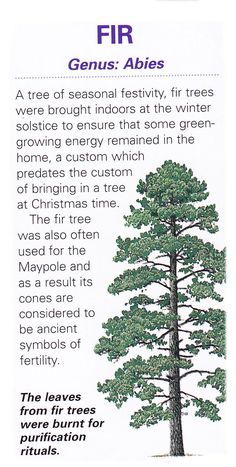
- is rather soft and thus not very suited for woodworking.
- Still, its distribution is narrowing because of logging for fuel and other human-related disturbances.[4]
- This insect species migrates
- from central and north United States
- and south Canada to Central Mexico (Michoacán and Estado de Mexico).
- During the fall migration,
- monarchs cover thousands of miles,
- with a corresponding multi-generational return north.
- The western North American population of monarchs west of the Rocky Mountains
- often migrates to sites in southern California
- but has been found in overwintering Mexican sites as well.[3][4]
Project Monarch
Project MKUltra, also called the CIA mind control program,
- is the code name given to a program of experiments on human subjects,
- at times illegal, designed and undertaken by the United States Central Intelligence Agency.[1]
- Experiments on humans were intended to identify and develop drugs and procedures
- to be used in interrogations and torture in order to weaken the individual to force confessions through mind control.
- Organized through the Scientific Intelligence Division of the CIA,
- the project coordinated with the Special Operations Division of the U.S. Army’s Chemical Corps.[2]
- The operation began in the early 1950s,
- was officially sanctioned in 1953,
- was reduced in scope in 1964,
- further curtailed in 1967,
- and officially halted in 1973.[3]
- The program engaged in many illegal activities,[4][5][6]
- including the use of unwitting U.S. and Canadian citizens as its test subjects,
- which led to controversy regarding its legitimacy.[4](p74)[7][8][9]
- MKUltra used numerous methods to manipulate people’s mental states and alter brain functions,
- including the surreptitious administration of drugs
- (especially LSD)
- and other chemicals,
- hypnosis,
- sensory deprivation,
- isolation and verbal abuse,
- as well as other forms of psychological torture.
Douglas Fir
Pseudotsuga menziesii, commonly known as
- Douglas fir, Douglas-fir
- and Oregon pine,
- is an evergreen conifer species native to western North America.
- One variety, the coast Douglas fir,
- grows along the Pacific Ocean from central British Columbia south to central California.
- A second variety, the Rocky Mountain Douglas fir,
- grows in the Rocky Mountains from British Columbia south to Mexico.
- The tree is dominant in western Washington and Oregon.
- It is extensively used for timber, worldwide.
Naming
- The common name honors David Douglas,
- a Scottish botanist and collector who first reported the extraordinary nature and potential of the species.
- The common name is misleading since it is not a true fir,
- i.e., not a member of the genus Abies.
- For this reason the name is often written as Douglas-fir (a name also used for the genus Pseudotsuga as a whole).[2]
- The specific epithet, menziesii,
- is after Archibald Menzies, a Scottish physician and rival naturalist to David Douglas.
- Menzies first documented the tree on Vancouver Island in 1791.
- Colloquially, the species is also known simply as Doug-fir or as Douglas pine (although the latter common name may also refer to Pinus douglasiana).
- One Coast Salish name for the tree, used in the Halkomelem language, is lá:yelhp.[3]
Description
- Douglas firs are medium-size to extremely large evergreen trees,
- 20–100 metres (70–330 ft) tall (although only coast Douglas firs reach such great height).[4]
- The leaves are flat, soft, linear,
- 2–4 centimetres (3⁄4–1 1⁄2 in) long, generally resembling those of the firs,
- occurring singly rather than in fascicles;
- they completely encircle the branches,
- which can be useful in recognizing the species.
- As the trees grow taller in denser forest, they lose their lower branches,
- such that the foliage may start high off the ground.
- Douglas firs in environments with more light may have branches much closer to the ground.
- The female cones are pendulous, with persistent scales unlike true firs.
- They are distinctive in having a long tridentine (three-pointed) bract
- that protrudes prominently above each scale
- (it resembles the back half of a mouse, with two feet and a tail).
Distribution
- One variety, coast Douglas fir (Pseudotsuga menziesii var. menziesii),
- grows in the coastal regions, from west-central British Columbia southward to central California.
- In Oregon and Washington, its range is continuous from the eastern edge of the Cascades
- west to the Pacific Coast Ranges and Pacific Ocean.
- In California, it is found in the Klamath and California Coast Ranges
- as far south as the Santa Lucia Range,
- with a small stand as far south as the Purisima Hills in Santa Barbara County.[5][6]
- In the Sierra Nevada, it ranges as far south as the Yosemite region.
- It occurs from near sea level along the coast to 1,800 m (5,900 ft) above sea level in the mountains of California.
- Further inland, coast Douglas fir is replaced by another variety,
- Rocky Mountain or interior Douglas fir (P. menziesii var. glauca).
- Interior Douglas fir intergrades with coast Douglas fir
- in the Cascades of northern Washington and southern British Columbia,
- and from there ranges northward to central British Columbia
- and southeastward to the Mexican border,
- becoming increasingly disjunct as latitude decreases and altitude increases.
- Mexican Douglas fir (P. lindleyana), which ranges as far south as Oaxaca, is often considered a variety of P. menziesii.
Ecology
- Douglas-fir prefers acidic or neutral soils.[7]
- However, Douglas fir exhibits considerable morphological plasticity, and on drier sites coast Douglas fir will generate deeper taproots.
- Interior Douglas fir exhibits even greater plasticity, occurring in stands of interior temperate rainforest in British Columbia,
- as well as at the edge of semi-arid sagebrush steppe throughout much of its range,
- where it generates even deeper taproots than coast Douglas fir is capable.
A snag provides nest cavities for birds
- Mature or “old-growth” Douglas fir forest is the primary habitat
- of the red tree vole (Arborimus longicaudus)
- and the spotted owl (Strix occidentalis).
- Home range requirements for breeding pairs of spotted owls
- are at least 400 ha (4 square kilometres, 990 acres) of old-growth.
- Red tree voles may also be found in immature forests if Douglas fir is a significant component.
- This animal nests almost exclusively in the foliage of Douglas fir trees.
- Nests are located 2–50 metres (5–165 ft) above the ground.
- The red vole’s diet consists chiefly of Douglas fir needles.
- A parasitic plant sometimes utilizing P. menziesii is Douglas-fir dwarf mistletoe(Arceuthobium douglasii).
- The leaves are also used by the woolly conifer aphid Adelges cooleyi;
- this 0.5 mm long sap-sucking insect is conspicuous
- on the undersides of the leaves by the small white “fluff spots” of protective wax that it produces.
- It is often present in large numbers, and can cause the foliage to turn yellowish from the damage it causes.
- Exceptionally, trees may be partially defoliated by it, but the damage is rarely this severe.
- Among Lepidoptera, apart from some that feed on
- Pseudotsugain general (see there) the gelechiid moths Chionodes abella and C. periculella
- as well as the cone scale-eating tortrix moth Cydia illutana have been recorded specifically on P. menziesii.
The coast Douglas fir variety is the dominant tree west of the Cascade Mountains in the Pacific Northwest,
- occurring in nearly all forest types, competes well on most parent materials, aspects, and slopes.
- Adapted to a moist, mild climate, it grows larger and faster than Rocky Mountain Douglas fir.
- Associated trees include
- western hemlock,
- Sitka spruce,
- sugar pine,
- western white pine,
- ponderosa pine,
- grand fir,
- coast redwood,
- western redcedar,
- California incense-cedar,
- Lawson’s cypress,
- tanoak,
- bigleaf maple
- and several others.
- Pure stands are also common, particularly north of the Umpqua River in Oregon.
- Poriol is a flavanone, a type of flavonoid, produced by P. menziesii in reaction to infection by Poria weirii.[8]
Uses
- This plant has ornamental value in large parks and gardens.[9]
- Away from its native area, it is also extensively used in forestry as a plantation tree for timber in Europe, New Zealand, Chile and elsewhere.
- It is also naturalised throughout Europe,[10] Argentina and Chile (called Pino Oregón),
- and in New Zealand sometimes to the extent of becoming an invasive species
- (termed a wilding conifer) subject to control measures.
- The buds have been used to flavor eau de vie, a clear, colorless fruit brandy.[11]
- Native Hawaiians built waʻa kaulua (double-hulled canoes) from coast Douglas fir logs that had drifted ashore.[12]
- The Douglas fir has been commonly used as a Christmas tree since the 1920s.
- Douglas fir Christmas trees are typically grown on plantations.
- It is the commonly used Christmas Tree
Jeremiah 10 : The Sovereignty of God
1Hear you the word which the LORD speaks to you, O house of Israel: 2Thus said the LORD, Learn not the way of the heathen, and be not dismayed at the signs of heaven; for the heathen are dismayed at them.
3For the customs of the people are vain: for one cuts a tree out of the forest, the work of the hands of the workman, with the ax.
4They deck it with silver and with gold; they fasten it with nails and with hammers, that it move not.
5They are upright as the palm tree, but speak not: they must needs be borne, because they cannot go.
Be not afraid of them; for they cannot do evil, neither also is it in them to do good.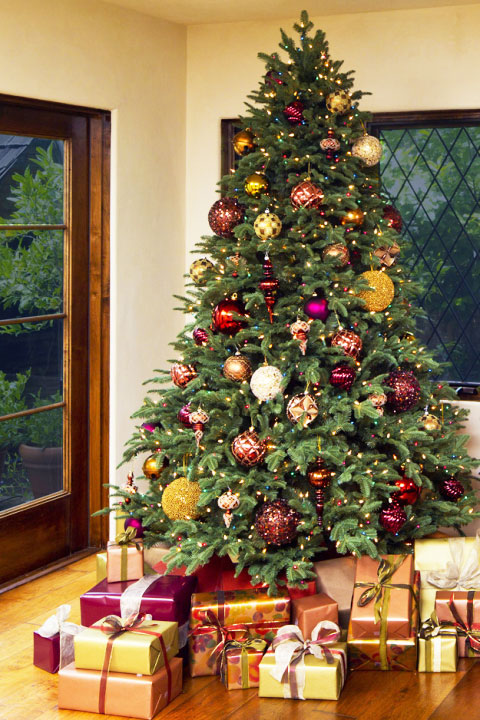
6For as much as there is none like to you, O LORD; you are great, and your name is great in might. 7Who would not fear you, O King of nations? for to you does it appertain: for as much as among all the wise men of the nations, and in all their kingdoms, there is none like to you. 8But they are altogether brutish and foolish: the stock is a doctrine of vanities. 9Silver spread into plates is brought from Tarshish, and gold from Uphaz, the work of the workman, and of the hands of the founder: blue and purple is their clothing: they are all the work of cunning men. 10But the LORD is the true God, he is the living God, and an everlasting king: at his wrath the earth shall tremble, and the nations shall not be able to abide his indignation. 11Thus shall you say to them, The gods that have not made the heavens and the earth, even they shall perish from the earth, and from under these heavens. 12He has made the earth by his power, he has established the world by his wisdom, and has stretched out the heavens by his discretion. 13When he utters his voice, there is a multitude of waters in the heavens, and he causes the vapors to ascend from the ends of the earth; he makes lightning with rain, and brings forth the wind out of his treasures.
14Every man is brutish in his knowledge: every founder is confounded by the graven image:
for his molten image is falsehood, and there is no breath in them.
15They are vanity, and the work of errors: in the time of their visitation they shall perish.
16The portion of Jacob is not like them: for he is the former of all things; and Israel is the rod of his inheritance: The LORD of hosts is his name.
The Mediterranean Cypress
- The species name sempervirens comes from the Latin for ‘evergreen’.

- also known as
- Italian cypress,
- [1]Tuscan cypress,
- Persian cypress,
- or pencil pine)
- It is a species of cypress native to the eastern Mediterranean region,
- C. sempervirens is a medium-sized coniferous evergreen tree to 35 m (115 ft) tall,
- with a conic crown with level branches
- and variably loosely hanging branchlets.[2]
- It is very long-lived, with some trees reported to be over 1,000 years old.
- The foliage grows in dense sprays, dark green in colour.
- The leaves are scale-like, 2–5 mm long, and produced on rounded (not flattened) shoots.
- The seed cones are ovoid or oblong, 25–40 mm long, with 10-14 scales, green at first, maturing brown about 20–24 months after pollination.
- The male cones are 3–5 mm long, and release pollen in late winter.
Uses
- Mediterranean Cypress has been widely cultivated as an ornamental tree for millennia away from its native range, mainly throughout the whole Mediterranean region
- It can also be grown successfully in areas with cooler, moister summers, such as the British Isles, New Zealand and the Pacific Northwest (coastal Oregon, Washington and British Columbia).
- It is also planted in Florida and parts of the coastal southern United States as an ornamental tree.
- In some areas, particularly the United States, it is known as “Italian” or “Tuscan cypress”.
- The vast majority of the trees in cultivation are selected cultivars with a fastigiate crown,
- with erect branches forming a narrow to very narrow crown often less than a tenth as wide as the tree is tall.
- The dark green “exclamation mark” shape of these trees is a highly characteristic signature of Mediterranean town and village landscapes.
- Formerly, the species was sometimes separated into two varieties,
- the wild C. sempervirens var. sempervirens (syn. var. horizontalis),
- and the fastigiate C. s. var. pyramidalis (syn. var. fastigiata, var. stricta),
- but the latter is now only distinguished as a Cultivar Group, with no botanical significance.
- It is also known for its very durable, scented wood,
- used most famously for the doors of St. Peter’s Basilica in the Vatican City, Rome.
- Cypress used to be used in distilleries
- as staves to hold mash ferments
- to make alcohol before the invention of stainless steel.
- Commonly seen throughout New Mexico,
- the Mediterranean Cypress is also known as the “drama tree”
- because of its tendency to bend with even the slightest of breezes.
- In cosmetics it is used as
- astringent,
- firming,
- anti-seborrheic,
- anti-dandruff,
- anti-aging
- and as fragrance.[3]
- It is also the traditional wood used for Italian harpsichords.[4]
Symbolism
- In classical antiquity,
- the cypress was a symbol of mourning
- and in the modern era
- it remains the principal cemetery tree in both the Muslim world and Europe.
- In the classical tradition,
- the cypress was associated with death and the underworld
- because it failed to regenerate when cut back too severely.
- Athenian households in mourning were garlanded with boughs of cypress.[6]
- Cypress was used to fumigate the air during cremations.[7]
- It was among the plants that were
- suitable for making wreaths to adorn statues of Pluto,
- the classical ruler of the underworld.[8]
- The poet Ovid, who wrote during the reign of Augustus,
- records the best-known myth
- that explains the association of the cypress with grief.
- The handsome boy Cyparissus, a favorite of Apollo, accidentally killed a beloved tame stag.
- His grief and remorse were so inconsolable that he asked to weep forever.
- He was transformed into cupressus sempervirens, with the tree’s sap as his tears.
- In another version of the story,
- it was the woodland god Silvanus
- who was the divine companion of Cyparissus
- and who accidentally killed the stag.
- When the boy was consumed by grief, Silvanus turned him into a tree,
- and thereafter carried a branch of cypress as a symbol of mourning.[10]
- In Greek mythology, besides Cyparissus,
- the cypress is also associated with Artemis and Hecate,
- a goddess of magic,
- crossroads and the underworld.
- Ancient Roman funerary rites used it extensively.
****Cypress is what Noah’s Ark was built of…(Gopher Wood)
תִּרְזָה tirzâh, teer-zaw’; 1 in 1
- a species of tree (apparently from its slenderness),
- perhaps the cypress:—cypress
Box Tree
- a species of cedar (from its erectness):—box (tree).
Wood carving
The white pieces are made of boxwood. The black piece is ebonized, not ebony.
- The extremely fine endgrain of box makes it suitable for woodblock printing and woodcut blocks, for which it was the usual material in Europe.
- In the 16th century, boxwood was used to create intricate decorative carvings; as of 2016, the largest collection of these carvings is at the Art Gallery of Ontario in Toronto.[5]
- High quality wooden spoons have usually been carved from box, with beech being the usual cheaper substitute.
- Boxwood was once called dudgeon,
- and was used for the handles of dirks, and daggers,
- with the result that such a knife was known as a dudgeon.
- Although one “in high dudgeon” is indignant and enraged,
- and while the image of a dagger held high,
- ready to plunge into an enemy, has a certain appeal,
- lexicographers have no real evidence as to the origin of the phrase.
Musical instruments
- Due to its high density and resistance to chipping,
- boxwood is a relatively economical material,
- and has been used to make parts for various stringed instruments since antiquity.[6]
- It is mostly used to make tailpieces, chin rests and tuning pegs, but may be used for a variety of other parts as well.
- Other woods used for this purpose are rosewood and ebony.
- Boxwood was a common material for the manufacture of recorders in the eighteenth century,
- and a large number of mid- to high-end instruments made today are produced from one or other species of boxwood.
- Boxwood was once a popular wood for other woodwind instruments,
- and was among the traditional woods for Great Highland bag pipes
- before tastes turned to imported dense tropical woods such as cocuswood, ebony, and African blackwood.[7]
[h839] תְּאַשּׁוּר tᵉʼashshûwr, teh-ash-shoor’; 2 in 2 box tree
- a species of cedar (from its erectness):—box (tree).
- box tree – a small evergreen tree
- perhaps cypress or cedar
- remarkable for the smallness of cones and with branches turned upward
- from H833;
Isaiah 41:
19 I will plant in the wilderness the cedar, the shittah tree, and the myrtle, and the oil tree;
I will set in the desert the fir tree, and the pine, and the box tree[H8391] together:
Isaiah 60:
13 The glory of Lebanon shall come unto thee, the fir tree, the pine tree, and the box [H8391] together,
to beautify the place of my sanctuary; and I will make the place of my feet glorious.
- the citrus, an odoriferous North African tree used as incense,
- prized by the ancient Greeks and Romans on account of the beauty of its wood for various ornamental purposes
- Citrus fruits and plants are also known by the Romance loanword agrumes (literally “sour fruits”).
- Thyine wood is a 15th-century English name for a wood from the tree known botanically as Tetraclinis articulata (syn. Callitris quadrivalvis, Thuja articulata).
- The name is derived from the Greek word thuon, “fragrant wood,”
- or possibly thuein, “to sacrifice”,
- and it was so called because it was burnt in sacrifices,
- on account of its fragrance.
Tetraclinis (also called arar,[2] araar[3] or Sictus tree)
- is a genus of evergreenconiferous trees in the cypress family Cupressaceae,
- containing only one species, Tetraclinis articulata,
- also known as Thuja articulata,[4
- ]sandarac, sandarac tree[5] or Barbary thuja,[6]
- endemic to the western Mediterranean region.
- It is native to northwestern Africa in the Atlas Mountains of Morocco, Algeria, and Tunisia, with two small outlying populations on Malta, and near Cartagena in southeast Spain.
- It grows at relatively low altitudes in a hot, dry subtropical Mediterranean climate.[7]
- Its closest relatives are Platycladus, Microbiota, and Calocedrus, with the closest resemblance to the latter.
- In older texts, it was sometimes treated in Thuja or Callitris, but it is less closely related to those genera.[7]
Tetraclinis cones at Al Hoceima National Park
It is a small, slow-growing tree, to 6–15 m (rarely 20 m) tall and 0.5 m (rarely 1 m) trunk diameter, often with two or more trunks from the base.The foliage forms in open sprays with scale-like leaves 1–8 mm long and 1–1.5 mm broad;the leaves are arranged in opposite decussate pairs, with the successive pairs closely then distantly spaced, so forming apparent whorls of four.The cones are 10–15 mm long, green ripening brown in about 8 months from pollination, and have four thick scales arranged in two opposite pairs.The seeds are 5–7 mm long and 2 mm broad, with a 3–4 mm broad papery wing on each side.[7][8]- It is one of only a small number of conifers able to coppice (regrow by sprouting from stumps), an adaptation to survive wildfire and moderate levels of browsing by animals.
- Old trees that have sprouted repeatedly over a long period form large burls at the base, known as lupias.[7]
Uses and symbolism
- It is the national tree of Malta, where it is known as għargħar (derived from the Arabic name araar).
- It is now being used locally in afforestation projects.
- The resin, known as sandarac, is used to make varnish and lacquer;
- it is particularly valued for preserving paintings.
- The wood, known as thuya wood[9] or citron wood,[4]
- and historically also known as thyine wood,
- is used for decorative woodwork,
- particularly wood from burls at the base of the trunk.
- The market in Morocco is unsustainable, focusing as it does on the burl, and has resulted in mass deforestation of the species.
- The species is also threatened by overgrazing, which can kill the coppice regrowth before it gets tall enough to be out of the reach of livestock.[7]
- Cultivation
- The species is cultivated to be grown as an ornamental tree, valued in hot, dry climates. It is also pruned in a hedge form, for privacy and security.[8] The plant can be trained for use as bonsaispecimens.
[g2367]θύϊνος thýïnos, thoo’-ee-nos;1x Thynine
- from a derivative of G2380
- (in the sense of blowing; denoting a certain fragrant tree);
- made of citron-wood:—thyine.
Revelation 18: Babylon is Fallen
(12) The merchandise of gold, and silver, and precious stones, and of pearls,
and fine linen, and purple, and silk, and scarlet, and all thyine tree [g2367]
and all manner vessels of ivory, and all manner vessels of most precious tree
and of brass, and iron, and marble,
Conium maculatum, the hemlock or poison hemlock,
- is a highly poisonous biennial herbaceous flowering plant
- in the carrot family Apiaceae,
- native to Europe and North Africa.
A hardy plant capable of living in a variety of environments, hemlock is widely naturalized in locations outside its native range.
Conium maculatum is known by several common names.
In addition to the English hemlock,
- the Australian carrot fern,[2]
- and the Irish devil’s breador devil’s porridge
- the following names are also used:
- poison parsley,
- spotted corobane
- and spotted hemlock.
- The plant should not be confused with the coniferous tree Tsuga, also known by the common name hemlock even though the two plants are quite different. The dried stems are sometimes called kecksies or kex.[3]
- Conium comes from the Ancient Greek κώνειον – kṓneion : ‘hemlock’.
- This may be related to konas (meaning to whirl), in reference to vertigo, one of the symptoms of ingesting the plant.[4]
- Conium maculatum is a herbaceous biennial flowering plant that grows to
- 1.5–2.5 m (5–8 ft) tall,
- with a smooth, green, hollow stem,
- usually spotted or streaked
- with red or purple on the lower half of the stem.
- All parts of the plant are hairless (glabrous);
- the leaves are two- to four-pinnate,
- finely divided and lacy, overall triangular in shape,
- up to 50 cm (20 in) long and 40 cm (16 in) broad.
- [5]It has been introduced and naturalised in many other areas, including Asia, North America, Australia, and New Zealand.
- It is often found on poorly drained soils, particularly near streams, ditches, and other surfaces water.
- It also appears on roadsides, edges of cultivated fields, and waste areas.[6]
- It is considered an invasive species in 12 U.S. states.[8]
- Conium maculatum grows in damp areas,[9] but also on drier rough grassland, roadsides, and disturbed ground.
- It is used as a food plant by the larvae of some Lepidoptera species, including silver-ground carpet.
- The poison hemlock moth (Agonopterix alstroemeriana) feeds on the plant during its larval stage.
- A. alstroemeriana has been widely used as a biological control agent for C. maculatum.[10]
- Poison hemlock flourishes in the spring, when most other forage is gone.
- All plant parts are poisonous, but once the plant is dried, the poison is greatly reduced, although not gone completely.[citation needed]
- Conium contains the piperidine alkaloids coniine, N-methylconiine, conhydrine, pseudoconhydrine, and gamma-coniceine (or g-coniceïne), which is the precursor of the other hemlock alkaloids.[6][12][13][14]
- Coniine has a chemical structure and pharmacological properties similar to nicotine.[6][15]
Coniine disrupts the workings of the central nervous system
- through inhibitory action on nicotinic acetylcholine receptors.
In high enough concentrations,
- coniine can be dangerous to humans and livestock.[13]
Due to high potency,
- the ingestion of seemingly small doses can easily result in respiratory collapse and death.[16]
Coniine causes death by
- blocking the neuromuscular junction in a manner similar to curare;
- this results in an ascending muscular paralysis with eventual paralysis of the respiratory muscles
- which results in death due to lack of oxygen to the heart and brain.
Death can be prevented by artificial ventilation until the effects have worn off 48–72 hours later.[6]
For an adult,
- the ingestion of more than 100 mg (0.1 gram) of coniine
- (about six to eight fresh leaves,
- or a smaller dose of the seeds or root)
- may be fatal.[17]
Coniine also has significant toxic effects on the kidney and toenails.
The presence of rhabdomyolysis and acute tubular necrosis was shown in patients who had died from hemlock poisoning. A fraction of these patients were also found to have acute renal failure.[18]
[h7219] רֹאשׁ rôʼsh, roshe; or רוֹשׁ rôwsh; 12x gall, hemlock, venom, bitter, poisonous
- apparently the same as H7218;
- a poisonous plant,
- probably the poppy (from its conspicuous head);
- generally poison (even of serpents):
- —gall, hemlock, poison, venom.
- “height in the south”
Deuteronomy 29:
18 Lest there should be among you man, or woman, or family, or tribe,
whose heart turneth away this day from the LORD our God,
to go and serve the gods of these nations;
lest there should be among you a root that beareth gall [H7219] and wormwood;
Deuteronomy 32:
32 For their vine is of the vine of Sodom, and of the fields of Gomorrah:
their grapes are grapes of gall [H7219] their clusters are bitter:
33 Their wine is the poison of dragons, and the cruel venom [H7219] of asps.
Job 20:
16 He shall suck the poison [H7219]of asps: the viper’s tongue shall slay him.
Psalm 69:
21 They gave me also gall [H7219] for my meat; and in my thirst they gave me vinegar to drink.
Jeremiah 8:
14 Why do we sit still? assemble yourselves, and let us enter into the defenced cities,
and let us be silent there: for the LORD our God hath put us to silence,
and given us water of gall [H7219] to drink, because we have sinned against the LORD.
Jeremiah 9:
15 Therefore thus saith the LORD of hosts, the God of Israel;
Behold, I will feed them, even this people, with wormwood, and give them water of gall [H7219] to drink.
Jeremiah 23:
15 Therefore thus saith the LORD of hosts concerning the prophets;
Behold, I will feed them with wormwood, and make them drink the water of gall [H7219]
for from the prophets of Jerusalem is profaneness gone forth into all the land.
Lamentations 3:
5 He hath builded against me, and compassed me with gall [H7219] and travail. …
19 Remembering mine affliction and my misery, the wormwood and the gall [H7219]
Hosea 10:
4 They have spoken words, swearing falsely in making a covenant:
thus judgment springeth up as hemlock [H7219] in the furrows of the field.
Amos 6:
12 Shall horses run upon the rock? will one plow there with oxen?
for ye have turned judgment into gall [H7219] and the fruit of righteousness into hemlock:
Thorns, Bramble
[h329] אָטָד ʼâṭâd, aw-tawd’; 6x thorn, bramble
- from an unused root probably meaning to pierce or make fast;
- a thorn-tree (especially the buckthorn):
- from firmness of roots
- bramble, thorn.
- the threshing Atad, meaning thorn, also called Abelmizraim and afterwards called Bethhogla
- was located on the west of Jordan between the Jordan and Jericho
- where they mourned the death of Jacob
Genesis 50:
10 And they came to the threshingfloor of Atad,[H329] which is beyond Jordan,
and there they mourned with a great and very sore lamentation:
and he made a mourning for his father seven days.
11 And when the inhabitants of the land, the Canaanites,
saw the mourning in the floor of Atad,[H329]they said,
This is a grievous mourning to the Egyptians:
wherefore the name of it was called Abelmizraim, which is beyond Jordan.
Judges 9:
14 Then said all the trees unto the bramble,[H329]
Come thou, and reign over us. 1
5 And the bramble,[H329] said unto the trees,
If in truth ye anoint me king over you,
then come and put your trust in my shadow:
and if not, let fire come out of the bramble,[H329] and devour the cedars of Lebanon.
Psalm 58:
9 Before your pots can feel the thorns,[H329]
he shall take them away as with a whirlwind,
both living, and in his wrath.
[H6975] קוֹץ qôwts, kotse; or קֹץ qôts; 12x thorn
- from H6972 (in the sense of pricking);
- a thorn:—thorn.
Genesis 3:
18 Thorns also[H6975] and thistles shall it bring forth to thee; and thou shalt eat the herb of the field;
Exodus 22:
6 If fire break out, and catch in thorns,[H6975] so that the stacks of corn,
or the standing corn, or the field, be consumed therewith;
he that kindled the fire shall surely make restitution.
Judges 8:
7 And Gideon said, Therefore when the LORD hath delivered Zebah and Zalmunna into mine hand,
then I will tear your flesh with the thorns,[H6975]of the wilderness and with briers[h1303]. …
16 And he took the elders of the city, and thorns,[H6975] of the wilderness and briers[h1303], and with them he taught the men of Succoth.
[h1303]בַּרְקָן barqân, bar-kwan’; 2x brier
- a thorn (perhaps as burning brightly):—brier.
- threshing wains used to tread out corn having a lower side armed and jagged with iron or fire-stones(flints)
- from H1300;
- בָּרָק bârâq, baw-rawk’; lightning;
- by analogy, a gleam;
- concretely, a flashing sword:
- —bright, glitter(-ing sword), lightning.
2 Samuel 23:
6 But the sons of Belial shall be all of them as thorns,[H6975] thrust away,
because they cannot be taken with hands:
Psalm 118:
12 They compassed me about like bees;
they are quenched as the fire of thorns,[H6975]for in the name of the LORD I will destroy them.
Isaiah 32:
13 Upon the land of my people shall come up thorns,[H6975] and briers[H8068];
yea, upon all the houses of joy in the joyous city:
[H8068] שָׁמִיר shâmîyr, shaw-meer’; 11x brier, diamond, thorn
- from H8104 in the original sense of pricking;
- a thorn;
- also (from its keenness for scratching) a gem,
- probably the diamond:—adamant (stone), brier, diamond.
Isaiah 5:
6 And I will lay it waste: it shall not be pruned, nor digged;
but there shall come up briers[H8068] and thorns:
I will also command the clouds that they rain no rain upon it.
Isaiah 7:
23 And it shall come to pass in that day, that every place shall be, where there were a thousand vines at a thousand silverlings, it shall even be for briers[H8068] and thorns.
24 With arrows and with bows shall men come thither; because all the land shall become briers[H8068] and thorns.
25 And on all hills that shall be digged with the mattock, there shall not come thither the fear of briers[H8068] and thorns: but it shall be for the sending forth of oxen, and for the treading of lesser cattle.
Isaiah 9:
18 For wickedness burneth as the fire: it shall devour the briers[H8068] and thorns,
and shall kindle in the thickets of the forest, and they shall mount up like the lifting up of smoke.
Isaiah 10:
17 And the light of Israel shall be for a fire, and his Holy One for a flame:
and it shall burn and devour his thorns and his briers[H8068] in one day;
Isaiah 27:
4 Fury is not in me: who would set the briers[H8068] and thorns against me in battle?
I would go through them, I would burn them together.
Isaiah 32:
13 Upon the land of my people shall come up thorns and briers[H8068] yea,
upon all the houses of joy in the joyous city:
Jeremiah 17:
1 The sin of Judah is written with a pen of iron,
and with the point of a diamond[H8068] it is graven upon the table of their heart,
and upon the horns of your altars;
Ezekiel 3:
9 As an adamant[H8068]harder than flint have I made thy forehead:
fear them not, neither be dismayed at their looks, though they be a rebellious house.
Zechariah 7:
12 Yea, they made their hearts as an adamant stone[H8068]lest they should hear the law,
and the words which the LORD of hosts hath sent in his spirit by the former prophets:
therefore came a great wrath from the LORD of hosts.
Isaiah 33:
12 And the people shall be as the burnings of lime:
as thorns,[H6975] cut up shall they be burned in the fire.
Jeremiah 4:
3 For thus saith the LORD to the men of Judah and Jerusalem,
Break up your fallow ground, and sow not among thorns,[H6975]
Jeremiah 12:
13 They have sown wheat, but shall reap thorns,[H6975] they have put themselves to pain,
but shall not profit: and they shall be ashamed of your revenues because of the fierce anger of the LORD.
Ezekiel 28:
24 And there shall be no more a pricking brier unto the house of Israel,
nor any grieving thorns,[H6975] of all that are round about them,
that despised them; and they shall know that I am the Lord GOD.
Hosea 10:
8 The high places also of Aven, the sin of Israel, shall be destroyed:
thethorns,[H6975]and the thistle[H1863]shall come up on their altars;
and they shall say to the mountains, Cover us; and to the hills, Fall on us
[H1863] דַּרְדַּר dardar, dar-dar’; 2x a thorn:—thistle..
- luxurious growing but useless
Genesis 3:
18 Thorns also and thistles[H1863] shall it bring forth to thee; and thou shalt eat the herb of the field;
[H2336] חוֹחַ chôwach, kho’-akh; 11x hook, ring, fetter, thorn, brier, bramble, thornbush, thicket
- from an unused root apparently meaning to pierce;
- a thorn;
- by analogy, a ring for the nose:
- —bramble, thistle, thorn.
2 Kings 14:
9 And Jehoash the king of Israel sent to Amaziah king of Judah, saying,
The thistle[H2336] that was in Lebanon sent to the cedar that was in Lebanon,
saying, Give thy daughter to my son to wife:
and there passed by a wild beast that was in Lebanon, and trode down the thistle[H2336]
2 Chronicles 25:
18 And Joash king of Israel sent to Amaziah king of Judah, saying,
The thistle[H2336]that was in Lebanon sent to the cedar that was in Lebanon, saying,
Give thy daughter to my son to wife:
and there passed by a wild beast that was in Lebanon, and trode down the thistle[H2336]
2 Chronicles 33:
11 Wherefore the LORD brought upon them the captains of the host of the king of Assyria,
which took Manasseh among the thorns[H2336] and bound him with fetters, and carried him to Babylon.
Job 31:
40 Let thistle[H2336] grow instead of wheat, and cockle instead of barley. The words of Job are ended.
Job 41:
2 Canst thou put an hook into his nose? or bore his jaw through with a thorn? [H2336]
Proverbs 26:
9 As a thorn[H2336] goeth up into the hand of a drunkard, so is a parable in the mouth of fools.
Song of Songs 2:
2 As the lily among thorns[H2336] so is my love among the daughters.
Isaiah 34:
13 And thorns shall come up in her palaces, nettles and brambles[H2336] in the fortresses thereof:
and it shall be an habitation of dragons, and a court for owls.
Hosea 9:
6 For, lo, they are gone because of destruction:
Egypt shall gather them up, Memphis shall bury them:
the pleasant places for their silver, nettles shall possess them:
thorns[H2336]shall be in their tabernacles.
- Fruit Trees :: Olive :: Sycamore :: Fig :: (Date)Palm :: Apple :: Pomegranate
- Alchemy :: Prima Materia (Lucifer) :: Projection :: Philosophers Stone




